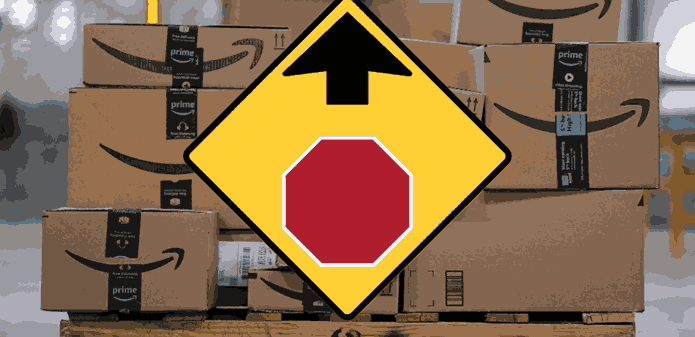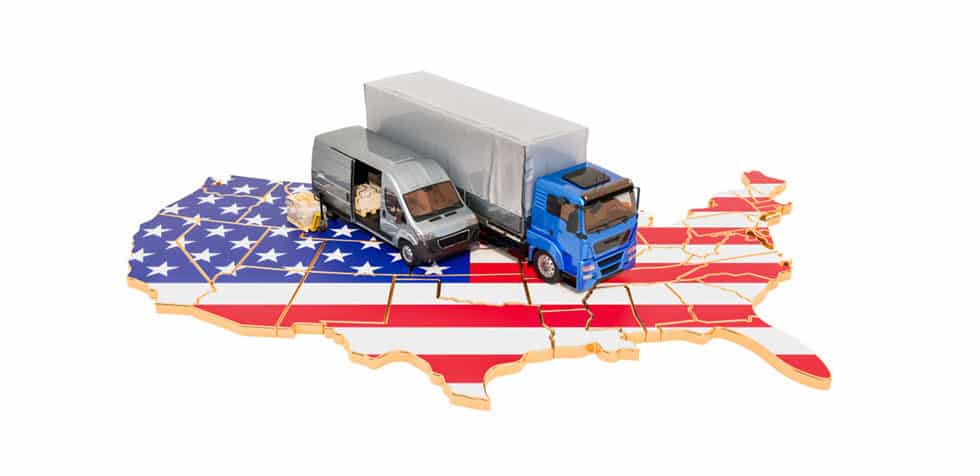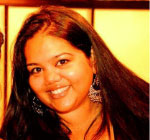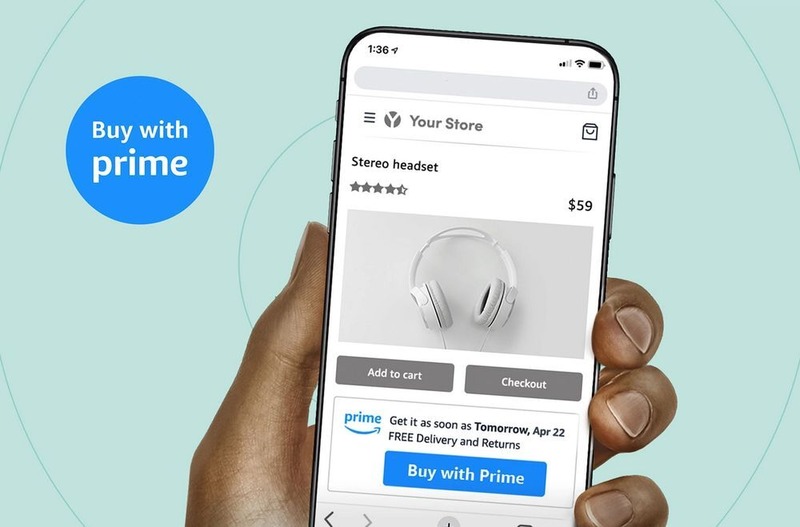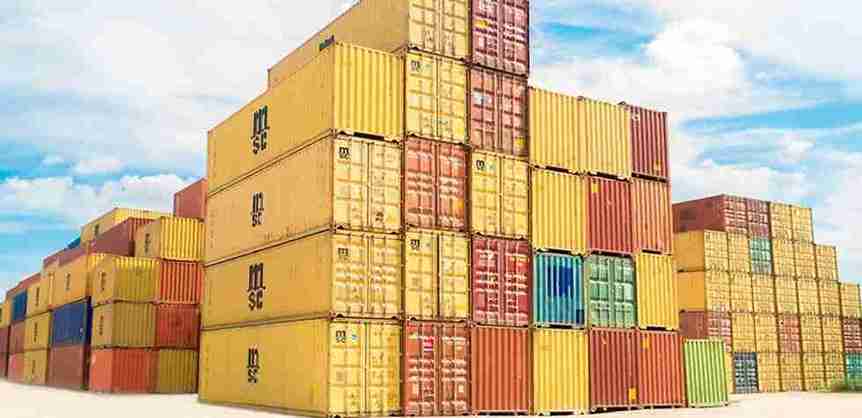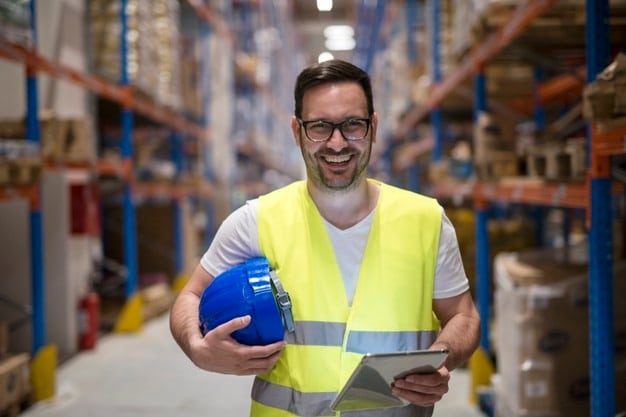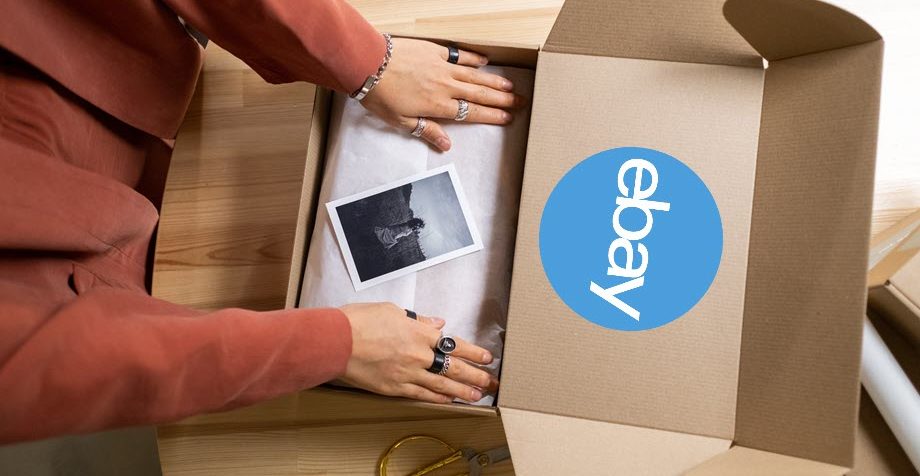Amazon FBA Q4 2021 Inventory Limits Put Merchant’s Earnings in Jeopardy
Amazon FBA sellers have unfortunately got used to steadily declining inventory limits due to Amazon’s inability to keep up with demand. Read on to learn more about changes to FBA inventory this holiday season, what you should do to maximize your limits, and how you can de-risk your holiday season with Amazon FBM.
What are the new limits?
Amazon FBA sellers were already hit with 20-65% drops in their inventory storage limits in April 2021 when Amazon changed from ASIN-level quantity limits to storage-type quantity limits – and they’re now sweating even lower limits as the holidays approach.

Amazon doesn’t publicize exactly how they calculate sellers’ limits, but sellers have been dismayed in recent weeks to see their restock numbers drop. FBA seller groups are lighting up with merchants whose holidays are all of a sudden in jeopardy – this comment on Telegram is emblematic of the challenge, “Hi, any advice on how to deal with Amazon decreasing restock limits to a third of what it was?”. The responses are befuddled: “Your IPI seems good”. What’s a seller to do?
On top of that, Amazon suddenly changed their Christmas receiving deadline from December 11th to December 2nd. The comments on the announcement, made October 8th, reveal a common theme.
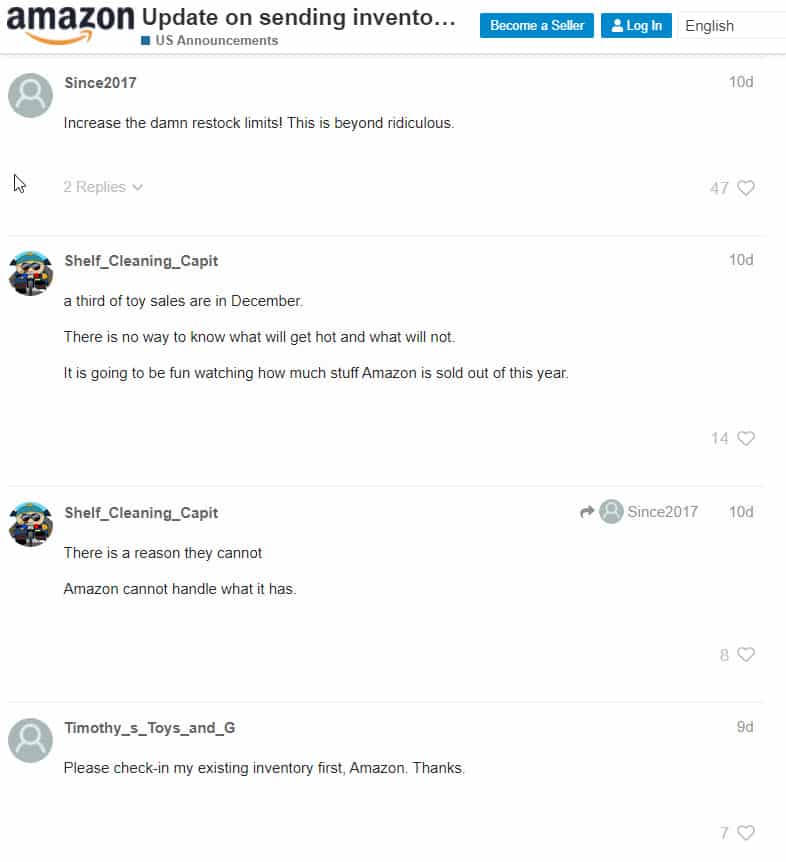
Frustrated sellers plead with Amazon to increase restock limits, but help isn’t coming. Amazon FBA’s history is instructive: over and over, they’ve made it harder to get inventory into FBA, not easier. This holiday receiving deadline is just one more seller-unfriendly change in a long history of negative changes.
How can merchants maximize their Amazon FBA IPI score?
If a seller is determined to only use Amazon FBA, then they need to maximize their IPI score to increase their inventory limits. The FBA Inventory Performance Index (as it’s known formally) measures how efficiently and productively Amazon sellers are managing their inventory. Our Amazon IPI deep dive tells you everything you need to know, but we’ve also included the critical information here.
IPI score is based on four factors:
- Excess inventory
- Sell-through rates
- Stranded inventory
- In-stock inventory
To be fair, reducing excess inventory isn’t the challenge on most sellers’ minds these days. Still, keep an eye on whether particular SKUs aren’t selling well and thus have months worth of product backed up in Amazon’s warehouses. Those are good candidates for removal or disposal orders, which immediately improve IPI score. When it comes to FBA inventory, the 80/20 rule is a bit different from normal: if just 20% of your SKUs are slow movers, they can still torpedo your overall score. You can’t get away with 80% effectiveness – you need 100%.
Next, look to maximize your sell-through rates to improve your IPI score and thus your inventory limits. It’s simple: sell-through rate is equal to the Total Sales of each ASIN divided by the Average Inventory Level of each ASIN for the last 90 days. Of course, every seller wants to improve their sell-through rate; this means lots of sales! The challenge, though, is that an improvement in sell-through rate means faster and faster replenishment orders. Sellers need to be ready to send replenishments as often as three or more times a week if they want to maximize sell-through rate.
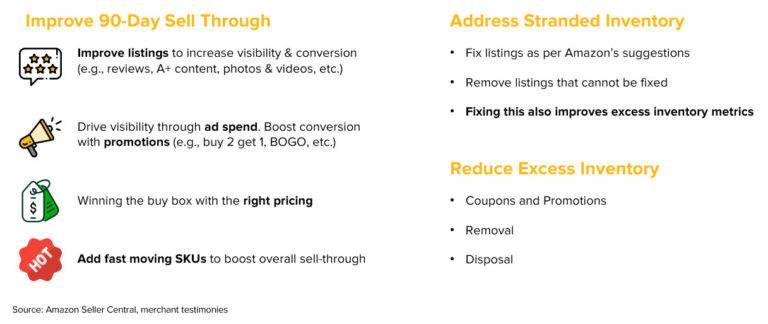
Stranded inventory hurts IPI score and is bad for business. Occasionally inventory in FBA gets inadvertently listed as FBM and thus gets stranded. Sometimes it’s a situation where the listing itself has been closed. It is also possible that pricing triggers an alert, and Amazon shuts down the listing to prevent it from selling outside of the minimum or maximum selling price set by the merchant. Keep a close eye on your seller tools and fix any issues with stranded inventory ASAP.
Finally, avoid FBA stockouts at all costs. This is an immense challenge in Q4, as sellers who have been increasing their sell-through rates become more and more vulnerable to a surge in demand (say, from the holidays). The surge can easily knock a SKU out of stock, which triggers a death spiral of lost search rank, lower IPI score, and lower inventory limits. There’s only one reliable way to avoid stockouts – duplicate Amazon FBM listings. With a duplicate FBM listing powered by the merchant or an FBA alternative, sellers can rest easy knowing that if there’s a run on their Amazon FBA stock, they can turn on their FBM listing and keep selling without risking their business.
How to use Amazon FBM to grow this holiday season
Amazon FBM isn’t just a good tool to grow on Amazon – it’s also the key that will unlock multichannel ecommerce sales. As we explained in the last section, Amazon FBM is a seller’s best way to avoid FBA stockouts and protect their Amazon business. On top of that, though, an excellent FBM approach will enable sellers to profitably grow on other marketplaces and on their own site. A recent Shopify study found that sellers on 3+ ecommerce channels boost their revenue by 200% – but Amazon Multi-channel Fulfillment (MCF) isn’t the answer to shipping for other channels.
First and foremost, fulfilling Amazon orders yourself or with an FBA alternative protects your holiday sales. The challenge for sellers trying to do it themselves is that unless they already have 4+ warehouses strategically placed around the United States, they either have to sacrifice fast shipping or free shipping. Offering 2-day shipping to the entire US from just one location puts the majority of customers in Zones 4 and up, which racks up incredible express rates – likely completely erasing margin. On the other hand, delivery times of 5-7 business days will lose customers left and right in the checkout stage, if they even get there. That’s why most sellers turn to an eCommerce order fulfillment platform to power their FBM.
The right eCommerce fulfillment provider won’t just ship your Amazon orders. The best have built easy integrations with all major marketplaces and shopping carts, so with next to no additional effort, sellers have a single operations solution to all of their sales channels. An effective multi-channel fulfillment and sales strategy will include a partner that powers affordable fast & free shipping. Customers expect fast & free shipping online, full stop. Sellers that meet that need see more impressions, higher conversion, and higher retention, so those that offer it on major marketplaces as well as their own site stand to gain the most.
Related Blog Posts
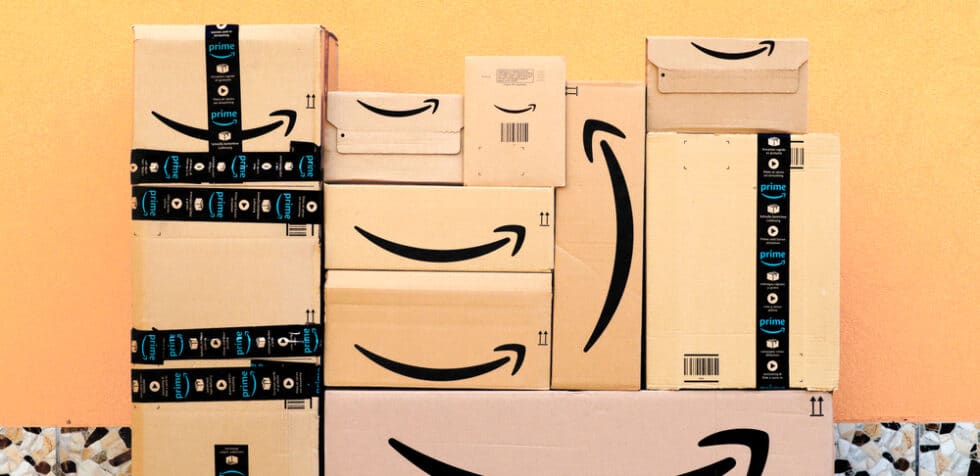
The Ultimate Guide to Selling and Winning on Amazon Seller Fulfilled Prime
Most people are familiar with the requirements that Amazon expects sellers to meet, but far fewer are aware of the roadblocks that make success hard to achieve. An even smaller number are aware of the strategies they can deploy to meet Amazon’s criteria and surpass them.
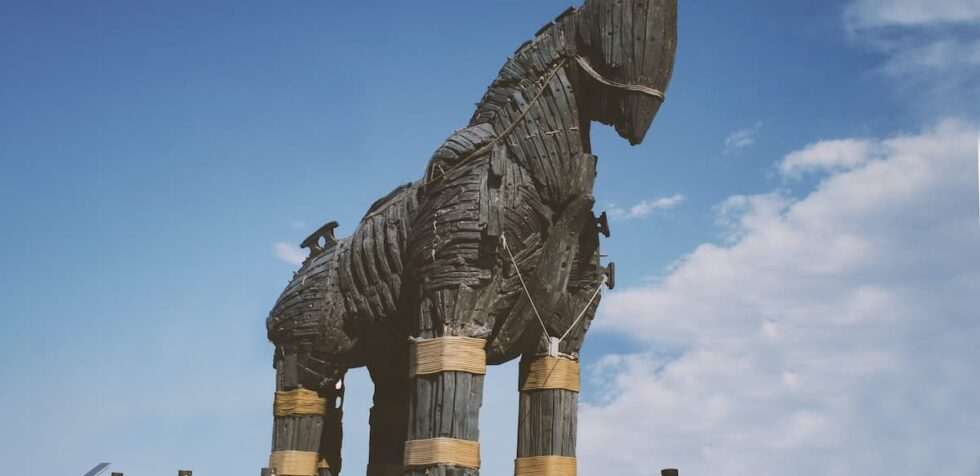
Amazon Buy With Prime: A Game-Changer for Customers, But a Trojan Horse for Merchants
For customers, Buy With Prime is a great service, but for ecommerce merchants, it’s a Trojan Horse. Amazon Prime circumvents the entire order checkout process from the merchant’s platform, and payment processing goes through Amazon
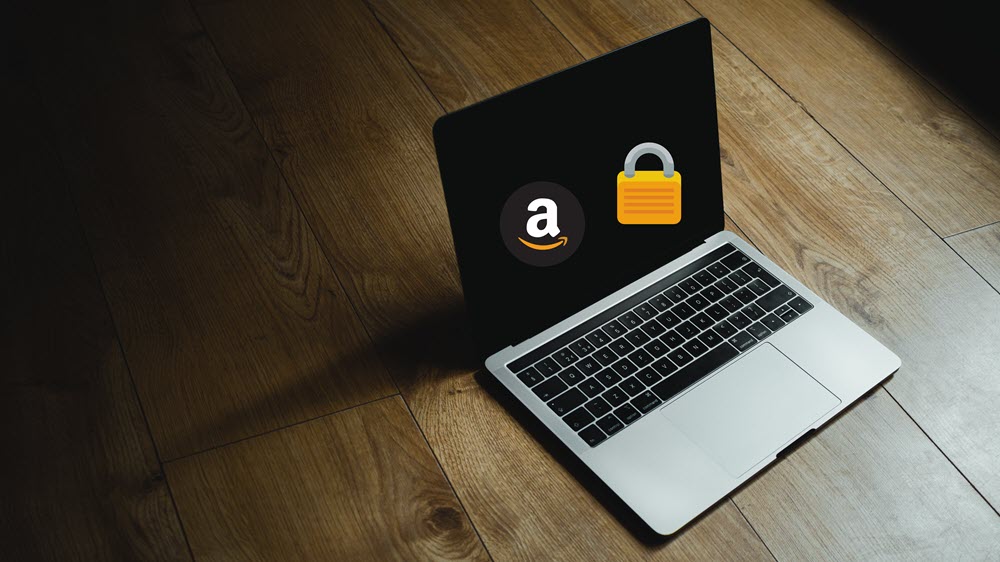
Protect Your Amazon Listings from Search Suppression, Hijackers, and Stockouts
Amazon is a competitive platform. You need to have a quality product, excellent listing content, and plenty of reviews to catch the attention of busy consumers
Up to 64% Lower Returns Processing Cost
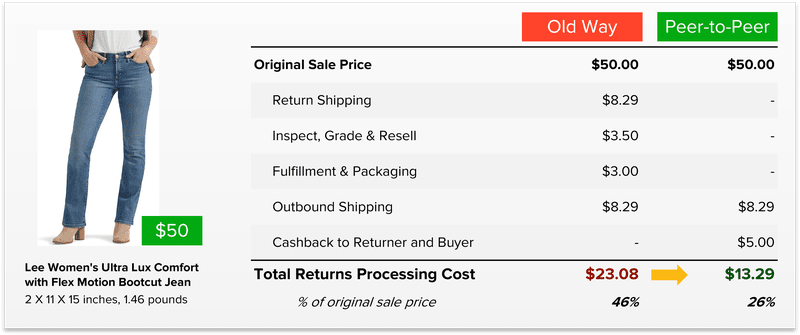
What are National Fulfillment Services?
In this article
 12 minutes
12 minutes
What are national fulfillment services?
In theory, any fulfillment provider can offer national fulfillment services – after all, carriers like FedEx and UPS will happily ship parcels across the entire United States (and charge a boatload for it). However, fulfilling nationally from one or two locations is costly and slow due to inefficient fulfillment processes and exorbitant shipping costs. So businesses are left with smaller margins and disgruntled customers waiting too long for packages.
A truly nationwide fulfillment solution has warehouses strategically placed across the entire United States, and it will distribute inventory across those multiple locations. With this strategy, there’s inventory close to all customers, so no matter where in the country the order comes from, it ships quickly and cheaply. In this article, we’ll cover when growing ecommerce businesses should switch to a nationwide network and provide advice on how to choose the right provider.
Defining Order Fulfillment
Order fulfillment is the backbone of any successful ecommerce operation. It encompasses the entire process of receiving, processing, and shipping customer orders in a timely and efficient manner. This multifaceted process includes several critical activities: managing inventory to ensure products are in stock, processing orders accurately, packaging items securely, and shipping them promptly. Each step is vital to ensuring that customer orders are fulfilled correctly and on time, which in turn drives customer satisfaction and loyalty. Effective order fulfillment is not just about moving products from point A to point B; it’s about creating a seamless experience that meets or exceeds customer expectations.
Importance of Order Fulfillment in Ecommerce
In the fast-paced world of ecommerce, order fulfillment is a key determinant of customer satisfaction and business success. When orders are fulfilled quickly and accurately, customers are more likely to have a positive experience, leading to repeat business and word-of-mouth referrals. On the other hand, delays, errors, or damaged goods can result in negative reviews and lost customers. Clear customer communication can help mitigate this, but that’s just a delaying action; improving the fulfillment process and increasing prompt delivery is the foundation of success. Therefore, ecommerce businesses must prioritize efficient and reliable order fulfillment processes. Investing in robust order fulfillment systems and partnering with reliable fulfillment centers can significantly enhance customer satisfaction, build a positive reputation, and ultimately drive business growth.
How National Fulfillment Services Work
National fulfillment services are designed to support a nationwide shipment network; shipping orders same-day to help save on shipping and fulfillment costs while maintaining prompt delivery to American customers no matter where they are.
Here’s an overview of how national fulfillment services work:
Order Receipt and Processing
When a customer places an order on an ecommerce platform, it is sent to the fulfillment center’s system, which then triggers the processing of the order. The order is reviewed for accuracy and any discrepancies or issues are addressed promptly. The fulfillment center’s team then picks and packs the ordered items, ensuring that they are properly packaged and labeled for shipping. This meticulous order fulfillment process ensures that customer orders are handled with care and precision, minimizing errors and enhancing customer satisfaction.
Inventory Management and Storage
National fulfillment services also involve the management and storage of inventory at each warehouse location. The fulfillment center stores the business’s products in a secure and climate-controlled environment, ensuring that they are protected from damage and deterioration. The fulfillment center’s inventory management system tracks the levels of inventory, ensuring that the business is notified when stock levels are low, and reordering should be initiated. This proactive approach to managing inventory helps businesses maintain optimal stock levels and avoid stockouts, which can disrupt the fulfillment process and negatively impact customer satisfaction, while at the same time minimizing costs of storing heaps of items in long-term storage.
Shipping and Delivery
Once the order is processed and packaged, it is shipped to the customer via a reliable shipping carrier. National fulfillment services often have partnerships with multiple shipping carriers, ensuring that the best rates and delivery times are secured. The fulfillment center’s system tracks the shipment, providing real-time updates on the status of the order. This comprehensive shipping service ensures that customer orders are delivered promptly and accurately, further enhancing the overall customer experience.
Warehouse Management System (WMS)
A Warehouse Management System (WMS) is a software application that manages and controls the day-to-day operations of a warehouse or fulfillment center. The WMS tracks inventory levels, monitors order processing, and optimizes warehouse operations. National fulfillment services use a WMS to ensure that orders are processed efficiently and accurately, and that inventory levels are always up-to-date.
The WMS is integrated with the business’s ecommerce platform, ensuring that orders are received and processed in real-time. The WMS also integrates with shipping carriers, ensuring that shipments are tracked and updated in real-time. This integration enables national fulfillment services to provide real-time updates on order status, ensuring that customers are always informed. By leveraging advanced technology and integration, national fulfillment services can provide businesses with a scalable and efficient order fulfillment solution, enabling them to focus on growth and customer satisfaction.
By incorporating these features, national fulfillment services can streamline logistics operations, reduce errors, and enhance overall efficiency. A national fulfillment service is a crucial edge for businesses looking to stay competitive in the fast-paced world of ecommerce.
When Should a Business Upgrade to a National Fulfillment Solution?
Businesses that start out on Amazon usually have a ready-made option for national fulfillment in Fulfillment By Amazon (FBA). Amazon has famously built its fulfillment network to massive proportions, and they have the most ecommerce fulfillment locations across the United States. For all non-FBA orders, the business is likely shipping out of either their own small warehouse, a small single 3PL, or even just a garage. Small, single operations like these don’t have the scale to match larger networks for efficiency.
It’s surprising how easy it is to gain value from a nationwide network – and how soon it can be done. At just a few hundred orders per month, businesses reach the point of enough scale to distribute inventory to multiple locations across the country. The benefits of national fulfillment will far outweigh the small increase in inventory needed to supply multiple locations.
The one caveat to this guidance is that if a business has very high SKU diversity, they’ll benefit most from outsourcing their high volume SKUs only. Low volume, “long tail” SKUs benefit much less from distributed fulfillment.
Benefits of National Fulfillment Services
National fulfillment services are vital for ecommerce businesses that want to boost revenue growth and protect margins. Fulfillment companies play a crucial role in providing order fulfillment services, especially for international sellers entering the U.S. market.
Utilizing a network of fulfillment centers across various countries allows businesses to reach a worldwide customer base quickly and economically. Global fulfillment enhances shipping efficiency and reduces costs for ecommerce businesses.
1. Nationwide Fulfillment Boosts Revenue Growth
“Fast and free” shipping badges are one of the single most effective growth tools in the ecommerce industry. Amazon metrics show that adding a Prime badge to a product for the first time improves conversion by 50%, and Walmart similarly found that their TwoDay badge drives a 50% lift. Every major marketplace and shopping cart now has their own version of the Prime badge, and each finds a big revenue boost from using the badge.
If a business is shipping out of one or two locations, it can qualify for fast and free shipping badges simply by paying express carrier rates – but what’s the point of revenue growth if shipping costs more than the product itself? Nationwide fulfillment networks unlock profitable revenue growth through fast shipping by placing inventory across the country. By leveraging nationwide fulfillment locations, every order will be fulfilled by a nearby location, so the cheap shipping options still deliver within 1 or 2 days. Turn on those badges across all channels and reap the rewards of better search rankings and higher conversion while still saving money on shipping.
2. Minimize Shipping Costs
Businesses shipping from just one or two locations will often see half or more of their orders shipping to Zone 5 and up. Compared to shipping out of a single location, national fulfillment distributes inventory more efficiently across the country through multiple warehouse locations, so orders are shipped from a starting point much closer to their destination.

Placing inventory in 3-5 locations all but eliminates the need to ship above Zone 4, cutting a business’s average zone profile by multiple zones. Every one of those shipping dollars saved goes straight to the bottom line; saving a few shipping zones on every order means saving a few dollars on every order. Imagine $2.00 more profit on every order.
3. Reduce Supply Chain Risk
Capacity is strained at every point of the supply chain, from international shipping to last mile delivery. Capacity isn’t crunched equally across the country though, which means that a nationwide network can significantly reduce the risk that all available inventory will be stuck in the same massive delay.
If there’s a delay in the supply chain affecting a region, inventory located at warehouses in other regions can pick up the slack. With only one or two small warehouses that might not be an option. Inclement weather is another common cause of regional disruption. If the only warehouse is closed due to hurricanes, snow, fire, or other natural cause then fulfillment may be completely frozen.
If that happens then selling because they had no way to fulfill orders. If they had a nationwide network, they would have kept on selling even as one part of the country shut down.
Additionally, a nationwide network allows inventory management across multiple locations through a single dashboard, enhancing operation scaling and improving customer service.
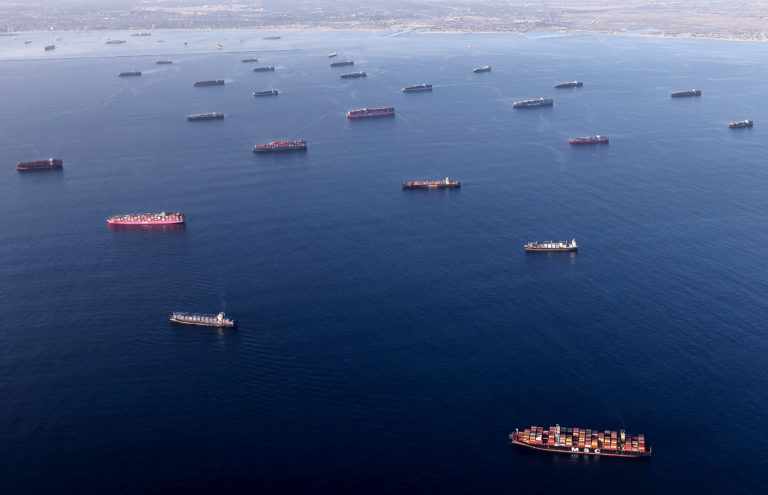
Cahoot National Fulfillment Services
Cahoot’s nationwide network of over a hundred warehouses provides affordable national fulfillment solutions for ecommerce business. Businesses with just one or two locations need to ship express to cover 99% of Americans with 1- and 2-day shipping, so fulfillment across the US is surprisingly expensive with two-coast providers. On the other hand, Cahoot will strategically distribute inventory to a truly national footprint so that a business can ship to 99% of the country in 1- and 2-days but always pay lower cost, ground shipping, rates.
Unlike other providers, Cahoot has the flexibility to upgrade a business’s existing warehousing and fulfillment services. If a business is fulfilling out of one or two warehouses, Cahoot can add a few fulfillment locations to seamlessly extend the network into a nationwide footprint. With this approach, businesses can continue to get value out of existing assets while enjoying the benefits of a nationwide network.
Getting started with Cahoot is surprisingly easy – with pre-built integrations for major ecommerce channels like Amazon, Walmart, Shopify, and BigCommerce, businesses can boost growth with fast shipping badges in under two weeks.
Contact Cahoot today to learn more about how our nationwide fulfillment network can be the key that unlocks profitable ecommerce growth.
Conclusion
Selecting the right fulfillment company is a critical decision for any ecommerce business. A comprehensive national fulfillment center offers a wide range of services, including warehousing, packaging, and shipping, which can streamline logistics operations and improve overall efficiency. When evaluating potential fulfillment centers, it’s important to consider the breadth of services they provide. A center that can handle everything from inventory management to last-mile delivery can be a valuable partner in ensuring smooth operations and high customer satisfaction.
Location is another crucial factor. A fulfillment center with multiple strategically placed facilities across the USA can significantly reduce transit times and shipping costs. This geographic advantage ensures that customer orders are shipped from the nearest location, leading to faster delivery times and lower shipping expenses. Additionally, a fulfillment center with a robust network of warehouses and distribution centers can offer more flexible and responsive logistics operations, allowing businesses to adapt quickly to changing market conditions.
Advanced technology is also a key consideration. Fulfillment centers equipped with automated sorting and packing systems can enhance efficiency and accuracy, reducing the likelihood of errors and delays. By leveraging technology, fulfillment centers can provide faster and more reliable service, which is essential for maintaining high levels of customer satisfaction.
Ultimately, the right fulfillment center for an ecommerce business will depend on its specific needs and requirements. By carefully evaluating the range of services, locations, and technology offered by different fulfillment centers, businesses can make an informed decision and choose a fulfillment partner that aligns with their goals and helps them achieve operational excellence.
Frequently Asked Questions
What is order fulfillment?
Order Fulfillment is the part of ecommerce relating to shipping products to customers. This starts with inventory management, going through processing orders at shipping locations, until products arrive at the customer’s doorstep.
What are nation-wide fulfillment centers?
Technically a fulfillment center is only a single location, so a fulfillment service needs multiple centers/warehouses to be considered nation-wide.
How many fulfillment centers are needed to provide 2 day ground shipping nation-wide?
This depends on several factors, but with 4+ fulfillment locations, 99% of the US population can be reached in 2 days via ground shipping. Cahoot has over 100 fulfillment locations to help deliver to US customers across the country.
Are nationwide fulfillment centers 3PL or 4PL?
A 3PL can support nationwide fulfillment, but the more locations a 3PL has, the closer they are to becoming a 4PL.

Up to 64% Lower Returns Processing Cost

Peer-to-Peer Order Fulfillment for Efficient and Affordable Shipping
In this article
 24 minutes
24 minutes
Listen to podcast here.
Podcast: ProShip ParcelCast Episode 23: What is a Peer-to-Peer Order Fulfillment Network?
Cahoot AI founder Manish Chowdhary discusses the need for distributed order fulfillment and the benefits of a peer-to-peer order fulfillment services network on a podcast. The network is a platform where eommerce brands and retailers collaborate to speed up order fulfillment and distribute inventory closer to the customer. The objective is to reduce shipping costs and improve customer experience with better and faster shipping. Distributed order fulfillment is the process of making free and fast shipping feasible and affordable for the retailer by placing inventory closer to the customer so that items can be shipped using affordable and inexpensive ground services rather than long-distance air that can be two to four times more expensive. An ecommerce brand or a retailer just needs four to five strategically located warehouses throughout the US to achieve two-day nationwide delivery guaranteed and nine warehouses to achieve one-day delivery like Amazon. Retailers have the option to build their own warehouses, lease them, sign up with multiple third party logistics (3PL) companies, or join an order fulfillment services network like Cahoot.
Justin Kramer:
Welcome to the 23rd episode of ParcelCast, what is a peer-to-peer order fulfillment services network. I’m your host, Justin Kramer, co-founder of ProShip. And with me is my special guest, Manish Chowdhary, founder of Cahoot AI, a distributed shipping software and peer-to-peer order fulfillment services network. Manish, could you take a second to introduce yourself and your company?
Manish Chowdhary:
Absolutely, Justin. Thank you for having me. First of all, my name is Manish Chowdhary, I’m the founder and CEO of Cahoot. Cahoot is the world’s first peer-to-peer order fulfillment services network. In simple words, it’s a collaboration platform where brands and retailers collaborate to speed up fulfillment and distribute inventory closer to the customer so that we reduce the shipping cost and also improve the customer experience with regards to better and faster shipping for the end consumer.
Justin Kramer:
You know what, let’s take that further. Let’s go ahead and talk about the need for distributed order fulfillment. We hear about it a lot. Can you explain to us what it is, and what our retailers’ options are nowadays?
Manish Chowdhary:
That’s a great question, Justin. Distributed order fulfillment is nothing but a methodology on making the free and fast shipping feasible and affordable for the retailer. When the consumers order stuff online, especially on sites like Amazon, they are conditioned now to expect free two-day delivery. In fact, Amazon has raised the bar on making it free one day delivery with Prime. Almost one-third of all Amazon Prime items get delivered in one business day, which is astounding. And for Amazon, business day is Monday through Sunday, so it’s not even business day anymore. And that’s the expectation that the consumers have with every ecommerce brand, every retailer. And for the brand or the retailer to make that affordably happen is bring the inventory closer to where the consumer is located so that item can be shipped using affordable, inexpensive ground service. As opposed to the long distance air, which is in on average two to four times more expensive than the economy ground shipping. So distributed order fulfillment is basically placing your inventory smartly closer to your customer so you can achieve one-day, two-day delivery without breaking the bank.
Justin Kramer:
Awesome, awesome. What kind of tools, technologies, and SLAs should we expect from something like this if I’m a mid-size retailer looking to get into something like this?
Manish Chowdhary:
You essentially have three options. One, you can go and build additional warehouses, and these are warehouses that need to exist at strategic locations. Meaning, having a warehouse in Wisconsin, for example, is not going to be very effective because that’s not where the large population lives. Of course, tri-state area, New York, New Jersey, closer to the port, that’s where a lot of the inventory from overseas come in. But also it’s a very densely populated region. And so is Southern California like Los Angeles, Long Beach, Orange County. And then of course the upper Midwest like Chicago and so on. In order to achieve two-day nationwide delivery guaranteed, a brand or a retailer needs four to five strategic warehouses throughout the nation. And if you wish to achieve one-day delivery like Amazon, you need nine warehouses strategically located in the US. And I mean strategic.
If you had a warehouse that is not in a strategic location, you’ll need many more. And so you have options. Your options are you’re going to go build these warehouses, which is very capital intensive, and you don’t know what the market is going to look like. And then also it’s getting the permits, getting all of this takes a very long time. Second option is to lease it. Again, same problem, you’ll need to enter into long-term leases because warehouse spaces in such short supply, which also is a pretty large commitment and investment. The third option is you have to go and sign up with multiple 3PLs. Because two-thirds of the 3PL, or third party logistics companies, the companies that professionally provide order fulfillment services to brands of retailers in the US are mom and pop, two-thirds. The remaining one-third are the largest of the world.
Those are the people that become the landlord to Amazon and Macy’s and others, which are largely out of reach for most mid-sized sellers. So now you need to go and negotiate and acquire these multiple 3PL with different agreements, different contracts, and then you need the technology to glue it all together because there is no [inaudible 00:05:05] to choke, so as to speak, if there’s a problem. And so all of this creates a huge burden, a huge investment for the brand or the retailer to achieve. Or the fourth option, which is really a more newer and emerging option, is to join a contract with an order fulfillment services network such as Cahoot. And there are a few others that has nationwide footprint, that has multi dozen warehouses that can achieve that delivery target, that SLA seamlessly. So that’s another option.
Justin Kramer:
You talk a lot about Amazon. Is Amazon Prime a distributed order fulfillment services network? Is that something that people are looking at at the… Or should I say, is that something that is the high end of what we’re talking about?
Manish Chowdhary:
Amazon FBA, which powers the Amazon Prime program, fulfillment by Amazon, is by far the largest distributed order fulfillment services network in the world. Not only the US. They have over 120 warehouses, not to count the sortation facilities and other cross stock facilities in the US. Amazon invested more during the pandemic in building out their fulfillment services network than they had invested in the previous 18 years. So the amount of money and resources that Amazon poured in 2020 and 2021, and also part of 2022, dwarfs the investment… Almost, they increased their footprint three times, and that’s why we heard some headlines about Amazon over building and they needed to rent out. Those were some headlines. And then trying to optimize their cost, laying off workers, closing down facilities. Amazon, like many of the other brands and retailers had overbuilt. But Amazon is by far the largest distributed order fulfillment services network in the world.
Justin Kramer:
If I’m a growing retailer and I’m looking to get into something, how is all this power that Amazon has, how does that impact me?
Manish Chowdhary:
Absolutely. Suffice to say that nearly every brand, every retailer should have an Amazon strategy. It’s hard to ignore Amazon is a sales channel when 60% of all e-commerce searches begin on Amazon, not on Google. Even whether you like Amazon or you don’t like Amazon, the reality is millions and millions of consumers go to Amazon every single day. And if they can’t find your products there, then that’s a problem, because you may be missing out on a big opportunity. A big, large segment of your target audience and population. Amazon does many things really, really well. And Amazon being the largest order fulfillment services network, but also Amazon Prime is the largest loyalty program in the world. By a long shot, you’ve got over 130 million, I don’t even have the real numbers as of now, but over 100 million subscribers that pay $120 a year to Amazon, and they get a whole host of benefits.
And the biggest benefit of it all is the free one-day, two-day delivery with no minimum. So you could literally order paperclips on Amazon, have it delivered the next day, and not pay anything for delivery because you’ve already paid into the membership program. So that is what consumers love. And while Amazon FBA is great at many things, and I can cover this if you like, I can elaborate on it. It’s not the be all and end all. It is good for many times, however, it has its own set of challenges that the retailers and ecommerce brands must be aware of.
Justin Kramer:
Let’s go ahead and ask one last question. Let’s talk about Buy With Prime. Can you tell me what the larger impact is of this program on e-commerce as a whole?
Manish Chowdhary:
That’s an excellent question, Justin. Buy With Prime launched in April of this year, this is something that has been a long time coming. As you and others listening may be familiar with, Amazon does everything at very large scale. They perfect a service first for themselves, and then they look to monetize that across the entire business ecosystem. And that’s exactly what Buy With Prime is. Buy With Prime is Amazon’s initiative to become even larger third party logistics company where Amazon will extend its Prime membership to other channels other than Amazon. Let’s say you have a website that is hosted on Shopify or on Magenta, or any website, you could install a Buy With Prime logo, a button, and you can send that inventory to Amazon FBA, and the consumer can now check out using the familiar Amazon account and get that product in one or two days.
Buy With Prime essentially extends all of the Prime benefits to websites other than Amazon. And we already seeing many, many sites that have adopted and embraced this because Amazon makes it so easy for the brands and retailers to fulfill their orders. And if brands and retailers that are heavy into FBA that sell a lot on Amazon for them, it’s a no-brainer. And so what the term or the phrase that I like to use here is, gradually and then suddenly. Up until now, consumers have been expecting the Prime benefits or one-day two-day delivery only on Amazon. But now let’s take an example. If you are a shoe retailer, and there are two of them, Acme Inc and ABC Inc. Acme Inc starts providing Buy With Prime on their website, and ABC Inc does not. Now as a consumer, I’m more likely to go check out from here, if all things being equal. So this is going to lead to this massive adoption and even acceleration of delivery expectation among consumers, because they now expect that same Prime-like experience on every channel they shop on.
Justin Kramer:
Interesting, interesting. Okay, let’s go ahead and switch topics here. Let’s talk about this new fulfillment economy and the workshare model. To the average logistics persons, companies like Gap, American Eagle, Quiet Logistics, Airterra, they were offering something very similar to what it sounds like the Cahoot network is offering. Can you talk to us a little bit about the similarities and the differences?
Manish Chowdhary:
Yeah, this is a new development that’s happening in the e-commerce and retail logistics space. Cahoot was of course the pioneer in peer-to-peer collaboration. And essentially, Cahoot acts as a neutral third party where there are plenty of merchants. There are about three million online merchants in the US compared to about 20,000 3PL companies. So these are third party logistics companies that will provide fulfillment as a service. By sheer comparison, and the analogy I’d like to make is Airbnb versus Hilton. There are many more homes with spare bedroom and a spare wing than there are hotel rooms in the US. Rather than building more warehouses where rooms are going empty, or the space is going empty in these millions of warehouses. Cahoot is aiming to bring these surplus capacity into the market so as to reduce the cost and improve utilization. This goes hand in hand with trying to make the most or more of what resources we already have, as opposed to trying to spend more capital expense, which essentially increases the cost one way or the other for the brand or the retailer.
What Cahoot has done is created a network of very highly qualified, highly vetted brands and retailers that do a spectacular job of order fulfillment for themselves, but that have extra capacity, let’s say 5, 10, 50, 20, 100,000 square feet of excess capacity. For the very first time, they can join the Cahoot network and monetize that excess capacity by fulfilling orders for other brands. And Cahoot acts as the independent governing body with the technology, the software, so that it is not a distraction for them. It is simple, it’s easy, and it’s effective. And it also gives the seller, the brand, our customer, the assurance that we are holding everybody accountable. And there is harmony and there’s SLA being delivered. And so it’s very exciting to see other retailers like Gap and American Eagle finally come to embrace the model that we’ve been preaching for a long time.
And the one difference, there’s not a lot we know about these models because there’s not a lot published on them because it’s still a closed system. But one thing, suffice to say that most brands, most retailers would prefer an independent body to audit the service provider. And that’s the advantage that Cahoot provides, because Cahoot is not representing just the buyer or just the warehouse. Cahoot is the independent body that keeps everybody organized and creates a common rule and level playing field for all the participants, and provides the visibility. That’s the one thing that I personally believe that having that independent body is a very crucial, it provides trust, it provides visibility, and it provides the assurance and it provides accountability. We would very much welcome Gap and American Eagle to join Cahoot so that we can give that assurance to small and large size retailers.
Justin Kramer:
And it also sounds like if I’m a Cahoot member I can now more easily expand to those five to nine distribution points so I can have two-day or next day delivery for most of the country.
Manish Chowdhary:
Absolutely. The whole idea is, how do we create a Prime-like network and Amazon FBA-like network without the challenges that FBA faces? FBA is great at many things, but it does not… Even to this day, many, many sellers could not get their inventory into FBA on time for the holidays. They had limits placed on their account that they could only send so many units, and they rely on other networks like Cahoot to fulfill even their orders on Amazon. While Amazon is growing, they’re launching all these services, it has its own set of challenges. Amazon is not geared for all things to everyone at all time because Amazon only wants fast moving inventory. But from a retailer’s perspective, they also need to fulfill their wholesale orders, they need to fulfill orders from Walmart. Which, you cannot use FBA to fulfill, it’s against Walmart’s rules and policies that you cannot have a Amazon branded box being delivered to the Walmart customer that bought the item on the Walmart marketplace. And rightfully so.
Justin Kramer:
Let’s switch over to some other networks that sound like they’re similar. I know that the carriers, some of the airlines, and other particular merchant groups have some stuff similar to this. Can you talk about that and compare and contrast a little bit for us?
Manish Chowdhary:
Absolutely, Justin. The idea of coopetition has existed for a long time, where seemingly retailers may consider themselves to be competitors, but not necessarily. Because a retailer who has a warehouse in New York is really not competing with the retailer of a different product with a warehouse in California. It is in their interest to collaborate so that both of them win because they are not competing. And so we know of many, many very successful networks of this kind, going back to the, let’s take airline co-share. Not every airline flies to Maui, Hawaii. But if you want to get from Chicago to Maui, you might have to go from Chicago to Dallas, or Chicago to LA, and then LA to Maui, for example. For example, Delta, as part of the Sky team has many other airlines that share the code and so on.
So this is very, very common. It makes the airlines be profitable and able to service the needs of the customer. Because ultimately about getting to Maui, not about how many websites and tickets you need to buy separately. Likewise, we also know for examples in the flower delivery space, the FTD. Which is if I want to send flowers, I’m in New York and I need to send flowers to my sister-in-law in Palo Alto in California. Of course the local florist is not going to be the one delivering, but as part of the network, they can easily arrange for someone locally to deliver. And we’ve always known about the workshare model in the carrier space, which we know that USPS has long had workshare programs with UPS, FedEx. Programs like UPS Mail Innovation, FedEx Smart Post. Cahoot is simply extending the same concept to the world of order fulfillment and warehouses. Because ultimately, when there is greater utilization of resources that we have, that leads to a better experience and lower cost for all the participants involved.
Justin Kramer:
Very interesting, very interesting. Manish, can you tell our audience, what is a peer-to-peer order fulfillment services network?
Manish Chowdhary:
A peer-to-peer order fulfillment services network is a large scale nationwide network of warehouses that allows a ecommerce brand or retailer to compete at the level of Amazon Prime, which is one-day, two-day free delivery. Every brand, every retailer should be offering the service on all channels that they serve. And they can easily achieve that by joining Cahoot, because Cahoot has the number of locations and the diversity to place the inventory closer to the customer so that the items can be delivered inexpensively and fast without incurring additional cost. And on the fulfillment provider side, if you are a brand or retailer that has, owns, or operates a warehouse and has spare capacity, be it 5,000 square feet or 50,000 square feet, and you would like to monetize that excess capacity, excess space, please come check out Cahoot.ai and fill out a contact us form so you can apply to become a Cahoot fulfillment partner.
And we would love to speak with you, because we would love to add more warehouses to our network. So you benefit not just by providing faster and cheaper delivery to your customers, but also by monetizing your spare capacity so you make more out of your existing fixed investments.
Justin Kramer:
Excellent. Let’s go ahead and let’s move on to the changing base of reverse logistics. Let’s face it, over the last several years we’ve seen companies try to return everything. We’ve seen companies try to return nothing, just ask the customer to throw it away. But one way or another, we all know that reverse logistics is a huge part of the customer satisfaction story when it comes to e-commerce. Can you tell us a little bit more about it?
Manish Chowdhary:
Yes, Justin, this is of course when e-commerce was only 1% of total retail. Brands and retailers were motivating customers to shop online because it was, so-called it was a channel shift. It was giving customers more self-service option. It is akin to motivating customers in the grocery stores to do self-checkout now, you try to encourage them. And of course consumers got very, very much used to… And in order to do that, they offered free shipping on the way in, and they also offered free returns. Because it was one of those taking away the friction in online shopping that if you didn’t like something you could return it for free and no questions asked. Of course, that was intended to be simply an encouragement for the consumers to shop online, and which quickly changed into the concept of showrooming. It’s essentially consumers, especially in the apparel space, buying three items with the intention of only keeping one.
And because items are free to return, you could simply return it back. This went on for over a decade now, and sites like Amazon, or when the products are rather inexpensive, it costs more to ship them back and process that item that is returned than to let the customer keep the item. However, we are entering a new phase and we can see that with the brands like Zara and Gap and others that are cramping down and they’re saying enough is enough. There have been chronic people that constantly return items that is playing a havoc on the profitability of these companies. Essentially, the movement has already started, and some of the top brands and retailers have taken a lead that now if you want to return the item back to Zara, you’re going to have to pay a return fee, or you have to pay cover the cost of shipping. I think they’re going through a natural leveling of consumer expectations. And I don’t expect free returns to loss for most items in the next couple of years, that’s going to change quite dramatically.
Justin Kramer:
That will be very interesting, no more free returns. I know companies like Zappos, that’s exactly how they made their name in the market was you could bracket, by the size above, the size below, and get to choose what you wanted. Very interesting. Are you seeing this anywhere yet, or is this an expected 2023 trend?
Manish Chowdhary:
No, we heard from folks like Zara and others that they are already beginning to charge for returns. This is already in play now. It’s just not an idea or a thought. And of course, it takes a little bit of the top leaders to take a position and then others will follow. I expect of course, Amazon being the big bellwether, it remains to be seen what Amazon Prime is going to do because I think they constantly set the bar, so we’ll see. But also from a sustainability standpoint, Justin, this is not just about the cost. But if we encourage people to return, we are adding more carbon emissions. I think there will be brands that would take a stance that it is not just good for e-commerce, but it’s good for the planet. I do expect that the scales to be tilting in this direction not too long from now.
Justin Kramer:
Yeah. And I have to say, I think you’re right. Because you do see even Amazon in their partnership with stores like Kohl’s wanting you to just take it to that store where you’re already going to be, rather than putting it in its own, usually oversized box, sticking a label on it, and having it take up space on a truck or a trailer somewhere. All right, let’s move on to final thoughts. Question for you, is there any takeaways you want to make sure that our listeners have heard today and that they action against?
Manish Chowdhary:
My recommendation to all the listeners is that free and fast delivery, free one-day, two-day delivery is here to stay. And it’s not just on Amazon. Any channel that you’re selling on, you’ve got to embrace distributed order fulfillment. How you do it, there are four options as we covered earlier in the podcast. It is crucial in order to maintain your competitive positioning and also maintaining the consumer expectation, which is changing very rapidly. And especially with Buy With Prime program, which is going to launch, or rather, get rolled out quite aggressively in 2023. You want to get ahead of that. I would very strongly encourage to get a head start in 2023 and test this out, and make sure you have this systems and technology and your fulfillment and your providers figured out. And if you have spare capacity, why not put that to good use? Energy costs are all time high. So if you can make an extra income from your existing investments, that’s good for you, but it’s also good for the planet.
Justin Kramer:
Agreed. The one thing I took away from this, I’m going to try to narrow it down to a sentence. In the past we’ve always had buy, lease, or outsource. Right? But with a peer-to-peer network, we now have a fourth option. We can buy, we can lease, we can outsource two or 3PL, or we can collaborate with other like retailers. Is that correct?
Manish Chowdhary:
That is absolutely correct, Justin. I think we are all in this together, and that’s why our tagline, Cahoot’s tagline is Power of Many. It’s brands of retailers helping each other.
Justin Kramer:
All right. If you’d like to learn more, please visit us at proship.com or cahoot.ai. Thank you for joining us today. If you have any questions, just a reminder, you can reach ProShip at sales@proshipinc.com, or (800)-353-7774. We hope you join us for our next ParcelCast. Thank you for tuning in.
Offer 1-day and 2-day shipping at ground rates or less.
Related Blog Posts

Packaging Design That Will Make Fulfillment Easy and Cut Costs
E-commerce Revolution with Strategic Packaging Solutions Like anyone in the e-commerce world, small business owners are always looking for ways to streamline their operations and
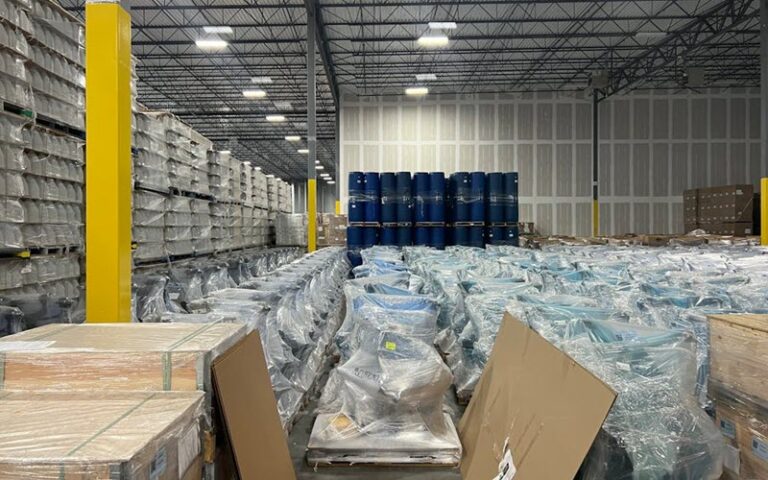
Preparing for Peak Holiday Shipping Season [Guide for 3PLs]
The peak holiday season is the most critical time for e-commerce businesses due to spikes in order volumes, high consumer expectations, and operational complexities.

2025 Updates to Amazon Referral and FBA Fees
Amazon’s decision to freeze referral and Fulfillment by Amazon (FBA) fees for 2025 in the US has been met with mixed reactions, and a closer look suggests that this move may be more self-serving than it appears on the surface.

Up to 64% Lower Returns Processing Cost

Ecommerce Fulfillment with Buy With Prime
Consumer expectations today are higher than they’ve ever been before. Many observers might put this down to rising incomes or things that shoppers visibly see every day, such as great marketing campaigns, innovative products, or competitive pricing. However, sellers have a secret weapon in the competition to acquire happy, loyal customers – fast, free shipping and order fulfillment.
The elevated customer expectations that online retailers face due to fast shipping times have been created by the “Amazon Prime Effect”. What is this effect, and what implications does it have for merchants selling online?
Constantly Increasing Consumer Expectations
Let’s go back to 2005, when Amazon introduced free two-day shipping on orders over $35, a move that many found puzzling – even illogical – at the time. Later in the same year, they introduced Prime, with its annual fee that allowed customers to get as many items as they wanted, with no shipping fees.
By the time of the Covid-19 pandemic, same-day shipping arrived on Prime. While Amazon continuing to raise the fulfillment bar has been great for them and their customers, competitors large and small have been scrambling to catch up. For example, it took Walmart 12 years to catch up and offer free 2-day shipping! As Amazon has gotten faster and faster at shipping, even their biggest competitors have taken a long time to reach the elevated shipping standards that Amazon makes table stakes.
On every channel today, the sellers winning are those offering shipping that can compete with Amazon. For example, Walmart listings (inspired by Amazon’s approach) offering 2-day delivery rank higher in search results, win the buy box more often, and see conversion lifts as high as 50%.

While pressures to provide ever-faster free shipping continue to increase, the pressures of intensifying competition are making it harder than ever for sellers to win. Costs at each step of the fulfillment chain (shipping, warehousing, and labor) are on the rise:
- Shipping: General Rate Increases have surged upward, remaining significantly higher than the prevailing inflation rate, making it harder and harder for merchants to absorb the last-mile costs involved in meeting the expectations of free same-day shipping.
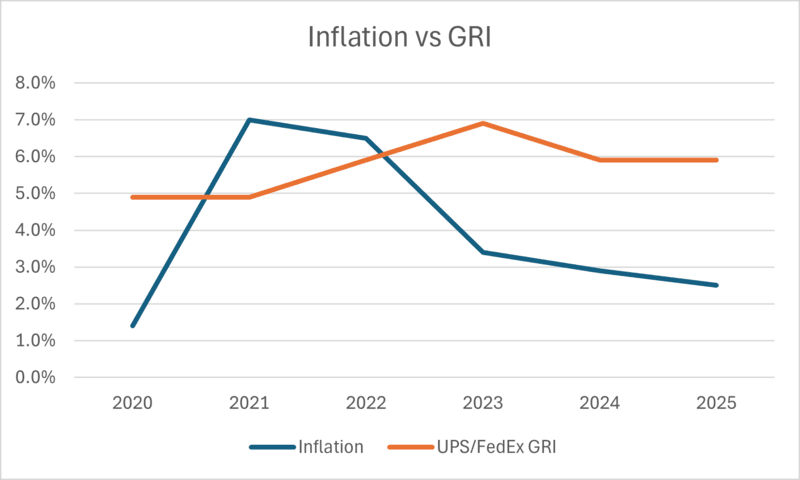
- Warehousing: To get orders fulfilled faster, you need to distribute your inventory in warehouses closer to the customer. But online merchants face the challenge of dealing with both elevated rent costs and limited vacant space in warehouses.
- Labor: As they continue to face significant staff turnover at fulfillment centers, Amazon has had to increase the wage they pay their workers several times in recent years. Most recently in 2024, they announced a new 7% increase in base pay for warehouse workers, bringing average base pay for such workers above $22/hr.
With shipping companies raising prices, warehouses becoming tougher to rent, and people becoming more expensive to hire, merchants face the daunting task of overcoming these challenges and meeting customer expectations.
What is Buy with Prime?
In 2022, Amazon raised the stakes yet again, making fast, free shipping available standard for every e-commerce brand and retailer through their Buy with Prime (BWP) program. This program allows any online merchant – not only those with Amazon stores – to offer order fulfillment using the elevated standard set by Prime. The program has already made a splash in a short time, with support from major brands such as Adidas and Fossil.
Amazon Buy with Prime is a program that allows third-party merchants to offer Prime shopping benefits—like fast, free shipping, a seamless checkout experience, and easy returns—on their own e-commerce websites. It integrates with a merchant’s online store, enabling Amazon Prime members to shop with confidence outside of Amazon.com while still receiving the perks they expect.
Any merchant with a Direct-to-Consumer (DTC) website and an Amazon Seller Central or Amazon Supply Chain account can apply for the Buy with Prime program. Merchants simply add the “Buy with Prime” button to their product pages on their own website, and customers then check out using their Amazon credentials, making the process faster and more convenient.
Amazon handles fulfillment and shipping, ensuring fast delivery through its logistics network, and also manages customer service and returns, simplifying post-purchase interactions.
Benefits of Buy With Prime
Amazon’s Buy with Prime program offers significant advantages for sellers looking to boost sales and improve their customer experience. By enabling merchants to offer the Prime shopping experience directly on their own websites, the program increases trust and boosts consumer spending – by 16% on average according to Amazon! With fast, free shipping and a seamless checkout experience backed by Amazon’s fulfillment network, sellers can attract high-value Prime members who are accustomed to quick delivery and hassle-free returns.
Additionally, Buy with Prime helps sellers leverage Amazon’s logistics expertise without being limited to selling only on Amazon’s marketplace. They maintain control over their branding and customer relationships while benefiting from Amazon’s fulfillment and payment processing capabilities. Merchants can feature reviews from Amazon on their website and place ads on the Amazon Marketplace which link to their own website and drive traffic. The program can also reduce cart abandonment rates, as shoppers are more likely to complete a purchase when they recognize the reliability of Prime.
Limitations and Problems of Buy With Prime
Only SKUs that are fulfilled using FBA (Amazon’s in-house fulfillment) are Buy with Prime eligible. While FBA works well, the Buy with Prime button disappears from the product listing on your website if there is no more inventory available in Amazon warehouses, and standard FBA fees and regulations apply to all inventory in an Amazon fulfillment center. FBA is not ideal for SKUs that do not move quickly – the costs associated with stocking inventory with Amazon that does not turn over frequently can become very large.
The most imposing drawback to the Buy with Prime program, however, is the significant payment processing fees, representing 2.4% of the cart value + $0.30, as well as an additional 3% Prime service fee (min $1.00). Shopify stores can avoid much of the pain associated with these fees, as their payment processing fees are waived and only standard Shopify fees (and the Prime service fee) apply. That being said, sellers should remember that other applicable FBA fees (storage, etc.) will also apply to orders fulfilled from Shopify stores.
Alternatives to Buy with Prime
For sellers seeking to aggressively minimize the costs associated with fulfillment, Amazon’s FBA and Multi-Channel Fulfillment (MCF) programs are, on average, cheaper than utilizing Buy with Prime (although there are specific product types for which Buy with Prime may be more efficient than MCF). But what about merchants who want to meet the modern standard for fast, cost-effective shipping without losing control of their fulfillment processes or submitting to the rigid requirements for which Amazon has become infamous?
Usually, merchants look to 3rd Party Logistics Providers (3PLs) for solutions. However, 3PLs can often come with significant costs and limitations, as fulfillment is their primary revenue stream.
That’s where a solution like Cahoot comes in – we’re unlocking the potential of over 2 million e-commerce retailers in the US that have their own warehouse space, who perform complete order fulfillment.
For the first time ever, merchants, brands, and e-commerce retailers will be able to monetize excess capacity available in their warehouses through Cahoot’s peer-to-peer order fulfillment network, which delivers fast, free 1-2 day shipping while also lowering costs. We offer the industry’s leading Service Level Agreement (SLA) and we help our Amazon sellers by offering Seller Fulfilled Prime (SFP) services. If you’d like us to take over all aspects of order fulfillment, we can do that too!
Conclusion
In an era where fast, free shipping is no longer a luxury but an expectation, sellers must carefully weigh their fulfillment options. Buy with Prime offers a compelling way to boost conversion rates and leverage Amazon’s logistics, but it comes with added costs and limitations that may not work for every merchant. While some sellers may find Amazon’s fulfillment solutions ideal, others may prefer alternative strategies that provide more control over operations and costs.
As competition intensifies and fulfillment challenges grow, innovative solutions like Cahoot’s peer-to-peer fulfillment network are emerging as viable alternatives. By leveraging existing warehouse capacity and a decentralized fulfillment model, sellers can meet the demand for fast, cost-effective shipping without the constraints of Amazon’s ecosystem. The key to success in today’s e-commerce landscape lies in choosing the right fulfillment strategy—one that balances speed, cost, and control to drive long-term growth.
Frequently Asked Questions
How does Buy with Prime benefit merchants?
Buy with Prime helps sellers leverage Amazon’s logistics expertise without being limited to selling only on Amazon’s marketplace. They maintain control over their branding and customer relationships while benefiting from Amazon’s fulfillment and payment processing capabilities. Merchants can feature reviews from Amazon on their website and place ads on the Amazon Marketplace which link to their own website and drive traffic.
What are the limitations of Buy with Prime?
Only SKUs that are fulfilled using FBA (Amazon’s in-house fulfillment) are Buy with Prime eligible. The Buy with Prime button disappears from the product listing on your website if there is no more inventory available in Amazon warehouses, and standard FBA fees and regulations apply to all inventory in an Amazon fulfillment center. Additionally, significant payment processing fees often apply.
This is why it’s important for sellers seeking to aggressively reduce the costs associated with fulfillment, to research alternatives to Buy with Prime.

Up to 64% Lower Returns Processing Cost

3PL Fulfillment: Amazon’s Inventory Limitations & Impact on Ecommerce Sellers
In this article
 28 minutes
28 minutes
Listen to podcast here.
Podcast: The Future of 3PL Fulfillment in the Face of Amazon Warehouse Distribution (AWD)
In a conversation between Manish Chowdhary, founder and CEO of Cahoot and Neil Twa, host of the High Voltage Business Builders podcast, the two discuss Amazon’s inventory limitations and the impact it has on ecommerce sellers. Amazon has different teams with different priorities, causing confusion among sellers who cannot rely on any one order fulfillment solution. The company has cut down on inventory shelving space for some ecommerce sellers while launching new services, such as Buy with Prime, which could pose a threat to marketplace delivery services like Shopify. Shopify recently banned Buy with Prime, which Manish argues cuts into the heart of revenue. To avoid being beholden to any order fulfillment service, sellers must have a backup that is not Amazon. The experts caution against putting all your eggs in one basket and encourage ecommerce sellers to move beyond Amazon if they want to grow their ecommerce brand.
Below is the transcript of their conversation, edited for clarity:
Neil Twa:
Welcome to the High Voltage Business Builders, a show where we interview entrepreneurs growing and scaling their income through e-Commerce and showing you the path to make your first or next million.
All right, Manish, thanks for joining the call, my friend, from Connecticut today. How is things out there on the East Coast for you?
Manish Chowdhary:
Things are a bit cloudy here, but it’s still a great day, and thank you for having me, Neil.
Neil Twa:
Yeah, it’s great to have you here, man. So, we’re talking a little bit about things that are obviously relevant to E-comm, but in different channels, not just Amazon. I know you handle multi-channel fulfillment.
Let’s talk a little bit about that, because I know it’s a big piece of what you do in your business model. Tell us what are you seeing, what’s most relevant right now. If someone’s listening to this and they’ve got a Dropshipping or an Amazon store or some other thing else, what’s something they should know right now that you feel is important for them to hear?
Manish Chowdhary:
Well, one of the things that… I just got back from Search Summit last week, you hear conflicting sets of information, right? I mean, Amazon is rolling out new services. You brought up a little while earlier, Amazon warehouse and distribution. So they’re ready to take on everything. Then I hear from a very large seller, very successful seller, just two days ago that their inventory limit has been cut to 1/3rd (of what it is presently).
Yeah, one side, Amazon is ready to take on everything you’ve got, and the second side is the people that are in need of that inventory today don’t have that. So Amazon has different teams working. You really can’t believe one thing or the other, because they’re all just simply trying to get in the limelight. So, it’s a lot of confusion out there for sellers.
Neil Twa:
Yeah, there is definitely, because they said, “We’re going to do 5% of you only (whom they said they would reduce inventory for). We’re going to have to make some holiday changes, we got inventory issue.” Now if I just look at our group, our businesses and we come back, there was more than 5% of the people in our group who got that notification just within our group. So I’m like, “Well, I don’t think that was quite 5%.” I think they kind of just placated those numbers just a little bit.
So they killed it on one end by halving down the shelving space we had on one side of the house, and then they’d say, “Hey, well, we got this new Amazon warehouse distribution (AWD) thing, and you could have unlimited storage over here all of a sudden.” It’s kind of like, “Well, I mean, were you playing the shifting shelves game here?” What do you think is going on?
Manish Chowdhary:
Well, I mean, again, Amazon is a very large company. There are different product owners, each one has their own agenda, so they may have gotten certain amount of space allocated. There’s also Amazon launched Buy with Prime service that is probably also run by a separate group, that they’re ready to take on order fulfillment for Shopify merchants or just about anyone.
So, it is very unnerving if you are a seller like yourself or people in your group, that if you see your inventory limits cut down, what confidence, what trust would you have in other services? So one thing that we at Cahoot like to educate our sellers or give them advice on is that you’ve got to have a backup, and it cannot be Amazon.
Amazon cannot be Amazon’s backup. You’ve got to have an independent third party that has your interest in mind, that is going to help you navigate the turbulent Amazon waters, and that’s not going to end anytime soon. It’s not a Q4 issue, it’s not a Q1 issue.
As long as you play in the Amazon ecosystem, that will continue to remain a challenge no matter how large, how many services they roll out.
Neil Twa:
Yeah, it’s a very valid point, and I love the way you speak Manish, because you’re a very pragmatic guy. I can tell in the way you look at these things. Because obviously with adding the Buy with Prime button, it’s added on a whole additional line of sellers from Shopify and other stuff, which I don’t know if they were aware maybe of what that would do. I know a lot of people have suddenly implemented that. I know for sure they’re going to take over a lot of Shopify’s opportunity for marketplace delivery they were trying to bring up.
Manish Chowdhary:
Well, but Shopify just came out last week I think, and banned it. So Shopify has publicly gone on record to say that installing the Buy with Prime button is against Shopify’s terms of service. So there you have it. Shopify wants to ban Buy with Prime, Buy with Prime wants to get on Shopify. Nobody wants to take FBA forwarding. It’s a big challenge if you’re a seller, you just cannot be beholden to any platform centric order fulfillment option.
Neil Twa:
And there it is. So we talk about pros and cons, and we’re very open about both of those things with Amazon, we don’t want people to be Amazon channel locked. So you need to move a brand beyond Amazon if you start there and incubate it or if you’re off Amazon, obviously you need the combination of the multi-channel aspect really for E-comm today. But like you said, you can’t put all your eggs in one basket, and as soon as you have the opportunity to split out profits, you should move another channel, another opportunity. I didn’t actually hear that update on Shopify, so that’s interesting news. I can see why they would do it. The marketplace is getting extremely competitive, and that opportunity was going to cut into their delivery systems, they were trying to ramp up.
Manish Chowdhary:
Well, it’s not even delivery system. It cuts into the heart of their revenue.
Neil Twa:
Well, for sure, for sure. I mean, you can see why we do these kinds of things and have these kind of conversations. If you’re out here just trying to flounder around on your own. For us, having the experience levels we do, and you too it’s even confusing at times to try to rationalize this stuff in the middle of all the experience we have versus people who are just trying to get going. So if you’re new and you’re just like, “Okay, I got an Amazon channel, I don’t necessarily have a 3PL yet, or I’m looking to get one.” What are the top three things you want people to know when they’re looking for a 3PL company that they should consider? What are the things they should know about it?
Manish Chowdhary:
First and foremost, I think it’s very important to make data-driven decisions. A lot of sellers just simply reach out to 3PLs and we get many of those inquiries. “Give me a price rate card.” Most 3PLs specialize in something. Not everyone specializes in everything. There’s micro – What we call mom-and-pop 3PLs. These are one location, two location, 3PLs, and then there are chains, and then you have networks like Cahoot. So it’s very important for the 3PLs to understand what kind of products are they going to deal with, what’s the inbound and outbound frequency, what kind of services you’re expecting, what is most important to you if you’re simply looking for an FBA forwarding service, or are you looking for DTC fulfillment? What kind of products, because there’s the shipping cost.
I’ll give you a very simple example. You can get dirt cheap order fulfillment, let’s just say even in the hottest market, Southern California, let’s say dirt cheap storage. But if most of your orders are going to New York or the East Coast, you are going to pay Zone 8 shipping prices for moving that item from California to New York on an individual basis. So net net, you actually will lose money even though you thought you got a great deal. Those things are very important. If this 3PL is going to take one or two days extra to ship from a lead time or if they’re going to use downgraded services, that will take longer for the consumer to receive. All of those things are very important to understand upfront as to what are you trying to solve for. And that is one thing that is very important. At least at Cahoot, we don’t blindly hand our pricing because we don’t know if we are going to be the best fit and only information and data tells us whether we are going to be the right fit.
So I would encourage sellers to really think about – how many SKUs? What kind of orders are you fulfilling? The count of orders? Let’s do averages over the last six to 12 months to make sure what’s the typical inventory storage requirement? How long do you store that inventory for? And having all that information and what the shipping cost is going to be, because many 3PLs do not do that. They charge the shipping cost, so you could lose a lot of money on that front. And how does it compare to FBA trying to make any comparison with FBA? So you know exactly for what products you’re going to come out ahead, what products are going to cost more. Because we going to admit FBA is very competitive for Small and Light, very attractive. So anybody who tells you they’re going to beat FBA prices across the board, they’re most likely lying.
Neil Twa:
Yeah. Because of this infrastructure, their multi-channel services usually can win to some degree. You just have to look at it from a strategic perspective and not the lowest race to the bottom pricing. Because I know that’s what happens to a lot of those people with rate cards is they’re selling $10, $12 products and they’ve got razor thin margins and it’s hard to beat Amazon’s FBA pricing at that level because they’re already at razor thin and Amazon’s trying to beat all the competition for pricing. So you got to be smart about your numbers. And usually people who are just asking for rate cards don’t really know what their numbers are. And they may not even know what Zone 8 means if they’re listening to this. But guys by the way, that’s the farthest distance from one location to another at shipping costs.
If you’ve ever tried to ship something and like US Postal Service go down and look, they have a Zone card and you’ll notice some of the locations are some of the farthest away, and you got to be smart about where your sales are coming from. If you’re on DTC, it’s a little easier. You can do a quick analysis and see where’s the majority of my orders going to from people who are buying. On Amazon, you got to wait a little bit and figure out where Amazon’s distribution is sending all your products into which areas you’re getting the most sales from, which may take a little bit of time from the system. But obviously, Manish, you know your stuff. I mean, just listening to you for the last five minutes. You clearly understand this. What is your background in this business model?
Manish Chowdhary:
So I was involved with building the e-commerce platform before the word e-commerce platform was invented. This is going back to early 2000. I was involved with building one of the first Turnkey Shopping Cart Software long before Shopify existed. Magento wasn’t on the market at that time. So built a very successful Shopping Cart Software, Turnkey e-commerce platform as we see now. So I’ve seen e-commerce evolve from its infancy. And then went on to build another similar product, but it’s a full service mid market e-commerce order management system, inventory management system. So I’ve been dealing with online retailers, technologies God, for 22 plus years. So I’ve seen everything and just about anything. I’ve got deep experience with now logistics. I’ve got 10 US patents on business process, orchestration and collaboration. So a lot of experience in anything and everything to do with e-commerce and operations.
Neil Twa:
Yeah, no, that’s a very historic background. I mean, back to 2000, is post dot-com bubble. Did you get out of the bubble somehow into this or did you ride that out okay or what happened there?
Manish Chowdhary:
Yeah, I mean, I think we did phenomenally well because that was the time when e-commerce was just taking off. And I think some of the large, the eToys of the world, they pretty much laid the foundation for the SMBs. SMBs were getting on for the very first time, just like the pandemic did, brought in a ton of people who started to sell online. But in this case, there were businesses that were offline, the brick-and-mortar that suddenly saw themselves as an opportunity to sell online. And this is actually, I think this was before Amazon opened itself up as a marketplace. Amazon marketplace did not exist. Yahoo Shopping used to be the marketplace. May or may not remember that.
Neil Twa:
No, I do. But the eToys thing is taking me back in my brain for a second. I haven’t heard eToys in a long time.
Manish Chowdhary:
Yeah, so those were the early days. So I’ve seen the evolution of that. So I mean every time there’s a crisis as they say, or there’s a challenge, there’s an opportunity. I mean, right now we are going through some historic black swan event with the pandemic and so on, but I think there’s some great businesses that are going to emerge out of this. I mean, yes, for my own business, which is Cahoot, it’s an innovative peer-to-peer order fulfillment services network. For the very first time, if you are a merchant who has a warehouse, you have an opportunity to make money if you have excess space in your warehouse. This is something that did not exist. Similar to what Uber and Airbnb did in 2008 when the financial crisis hit. All of a sudden people were without jobs. So they were going and signing up to become drivers for Uber, which allowed Uber to offer low prices for short-term transportation, which really helped them take off.
Similarly, Airbnb also emerged during that time when people were trying to save on short-term stays. They don’t want to pay large, heavy amounts to the Hiltons and the Marriott’s of the world, and there was a great opportunity for them to monetize their spare bedroom. And so Cahoot is doing something very similar in the order fulfillment and logistics space. So if you have a warehouse and you have your act together and you’ve got spare capacity, for the very first time you can come to Cahoot, join our network and apply to become an order fulfillment partner and make some money.
Neil Twa:
So peer-to-peer order fulfillment services network, that’s new, that’s very innovative.
Manish Chowdhary:
Thank you. Thank you.
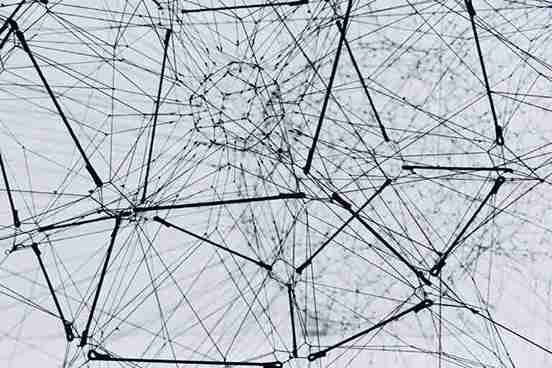
Neil Twa:
Yeah. Obviously your innovations and patents and other things have led you to some really new concepts. Where do you see that moving in the next year with some of the challenges around order fulfillment, longer shipping times? Where do you see that going?
Manish Chowdhary:
Yeah, I mean, I think that the order fulfillment companies should be embracing what I call merchant inclusive fulfillment. If you think about a merchant’s needs, a merchant wants to bring in inventory, whether it’s domestically or international. The inventory is going to come into one of the bigger ports. There are some of the less popular ports that I recommend right now. If you’re having trouble getting inventory to Long Beach or Oakland at New York, New Jersey, you can look into Charleston, you can look into Miami, you can look into some of the other ports that are less congested. I mean, I think merchants want a single provider that can handle their B2B, that they can stage their inventory and then drip it to FBA as needed for the items that make sense. They can do the order fulfillment for other channels, Shopify, Walmart, others, I know Walmart launched its Walmart fulfillment services.
Lot of sellers are not super excited about that. They still find that to be in early stages and infancy in its technology evolution. People are going and rushing to build new warehouses. But we believe that there are 2 million merchants in the US. Many of them do order fulfillment on their own, that there’s plenty of capacity available, just like how Airbnb helped unlock millions of rooms as opposed to going out and building new hotels in an already crowded space. When somebody builds a very expensive warehouse, they’re going to charge you something very expensive for their services because they got to recover their expenses. So Cahoot is very unique in that way to leverage existing assets so that we can get higher utilization for what already exists.
Neil Twa:
Fantastic man. And if I’m not wrong, it’s cahoot.ai, is that correct?
Manish Chowdhary:
Cahoot.ai, yes.
Neil Twa:
Okay. And when they show up, what should they expect to give you to get the right information necessary? And we’re talking about sellers who are already in the marketplace in one capacity channel or another, but we’re also talking about those who have additional warehouse space, maybe even other 3PLs who might want to utilize that space, if I’m hearing you correctly, can connect with you as well. Is that right?
Manish Chowdhary:
That’s right. We have two parts of our network. The sellers that are looking to outsource order fulfillment, they can come to Cahoot. If you have a great deal, come out to Cahoot, let us reconfirm that you still have a great deal, no harm done. It’s something to be aware of. Or if you have one location, you want to add a second location because you’re getting orders from nationwide. We have the technology, the software that can make that happen seamlessly. And if you’re super happy with your existing provider, we are not looking to replace them or displace them. That’s just not the way how Cahoot operates. We would invite them to come join the Cahoot network so they can participate and they can stay part of it. Because if you have got a good thing going, we know we have the technology to glue it all together.
And on the supply side, if you are a warehouse that has excess capacity that you want to monetize, then you come join and apply to become an order fulfillment partner. And we invite 3PLs as well to come join as a fulfillment partner. Because let’s face it, let’s say you are an East Coast based 3PL, your customers, your merchants are demanding a location on the West coast. So rather than losing that client entirely, you can come and partner with somebody so you can keep that client and meet that client’s needs. Because if you choose to ignore that client’s needs, because to your point, Neil, Zone 8 shipping from New York to California Zone 8, that’s very expensive however you slice it. And even if your fulfillment providers rates are the cheapest, you are still going to come out in the red because shipping orders cross-country has two problems, higher shipping cost, and longer transit time.
It takes five days for the item to be delivered, sometimes could be up to six, seven days. So we invite both 3PLs and warehouses of capacity to come check us out, apply to become an order fulfillment partner, and for the sellers to look out and find a merchant inclusive fulfillment solution. You got to have a backup. And I’m talking about the seller, Neil, that I spoke with last week. Sellers in the Amazon space – they are plugged in, they’re super smart, you would know them, even they don’t have a backup. And it’s appalling to me that how can you put all the eggs in one basket?
Neil Twa:
Once you get to be a certain size – Risk management needs to be a big part of your operational component. I would be surprised that they didn’t have some of that in place, but I’m sure they could help you. You’re obviously got an innovative, unique idea for both seller and 3PL. And folks, if you’re listening to this, I would encourage you to check it out. The link will be in the show notes, go to cahoot.ai, check out what Manish is doing. Obviously, you can hear he’s a super smart guy who’s figured something out that’s really cool. It will benefit both you and the 3PL provider you might be using at this point. Guys, I would encourage you to go check it out and take a look at that if both, again, you’re a seller and a 3PL. Manish, any other final words of wisdom you want to leave on us today?
.
Manish Chowdhary:
Thank you, Neil. I mean, there’s one more thing in the words of Steve Jobs.
Cahoot has the industry-leading shipping software. So if you are not ready to outsource fulfillment and you have a warehouse, you do order fulfillment or shipping yourself, Cahoot can save you a lot of time in rate shopping. We did a side-by-side comparison between ShipStation and Cahoot, which is a leading product on the market. And of course, as they say, Cahoot came out 21 times faster, that’s just the technology that Cahoot has built that reduces human error. It reduces a human trying to compare UPS, FedEx, USPS rates, figuring out which one to pick. And rather than doing it one order at a time or applying any kind of crude rules, Cahoot’s technology automates all of it. So if you want many hours back in your day, and I kid you not, we have a client that was spending four hours on a Sunday away from their family printing labels so that they could ship those orders out on Monday and they could not fulfill Monday’s orders until Tuesday because they just did not have the capacity.
And so there’s some unique technology even on the shipping software front. If you can save three hours, four hours of labor a day that’s money back in your pocket to do some other things that are more revenue producing.

Neil Twa:
Very smart and interesting angle on that. Definitely. So a shipping station comparison is a very good analogy for what your software does and obviously it’s very powerful. We may have to check that out ourselves, for some of the projects we’re working on. Thanks for bringing that up, man. I appreciate your time today, sir.
Manish Chowdhary:
Thank you. Neil, anything else you’d like to cover?
Neil Twa:
Look, that’s good for me at this point, unless you have something else you would like us to know.
Manish Chowdhary:
No, I mean, I think just merchants should be aware that Amazon FBA has added peak fulfillment surcharge of 6 to 8% for the very first time. That’s I think getting rolled out on October 15th. That’s a fourth increase in FBA fees this year. I think in the first quarter they revamped the Small and Light pricing. April 28th they added 5% inflation surcharge. And then of course the storage triples in Q4, as you know. So I would encourage sellers to go check out their bills and to make sure that nothing in the Amazon FBA world remains as is. So be mindful of that as you’re calculating your profitability, how much you’re allocating to your advertising, return on advertising spend and all that good stuff. And some other big news, I mean, Pharmapacks the number one Amazon seller going out of business –
Neil Twa:
Yeah. Their margins were too thin. And I was just going to cover a little bit of that actually, because on the antithesis side of that, one of the third largest native acquisitions just occurred for a cosmetics company in a $630 million acquisition. So on the other side, you got to look at the differences between the two. Why did one go out of business, and why did one have such a tremendous exit? And then how to deal with the rising costs of obviously inflation or fees, obviously, as you mentioned are going up.
And that’s a good topic because I mean, you got to look at the value of the brand and the value of the products you’re putting into it. That’s one of the things we always drive out here. If you’re going to sell something for $30 or less on Amazon, you better have a very high margin on it or not sell anything less than $30, or you’re going to run into these kinds of really razor thinned margins where you might be making it great or it cost is good, and the product is growing, but all of a sudden that 5% surcharge or changes at this fourth quarter of the year slice your margins down to a dollar in profit, which is really no for a business model.
So we want to encourage everybody on the back of that to remember, keep your product profitability above $10, if not higher to $15 in that profit per unit for your products. If you can’t achieve that on your products currently, you need to get products in the market that will do that. That will raise with price, can raise retail price against inflation and market hedges or of course increasing costs and operations and logistics as we just spoke about, won’t impact you as greatly. Yes, they’ll impact you, but it won’t be devastating. And I know there’s a lot of sellers in the market right now that are going to face that coming into fourth quarter.
As you mentioned earlier, there’s opportunity in everything. For some of us, there’s going to be great opportunity priced correctly and in the profit margins we need, whose fourth quarter this year is going to be great. But I think there’re going to be a lot of sellers who are coming off of a COVID bump who still haven’t right sized their metrics or expectations and rising cost of inflations are going to hurt them in this coming quarter. And many of them may not be able to make it through the end of the fourth quarter, even though they should be doing really well.
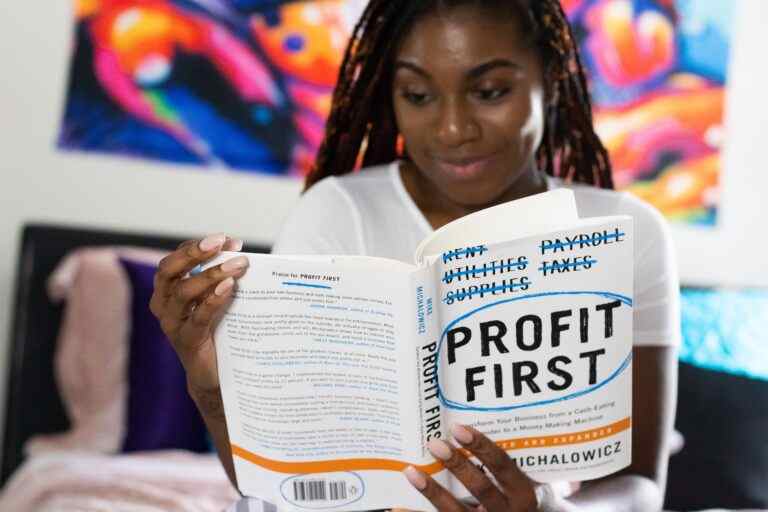
Manish Chowdhary:
Right. And business metrics have changed. I mean, if you’re looking to get acquired, that brings massive challenges of its own. Profitability is going to be key. The other advice that we are giving sellers is don’t wait for the last minute. Holiday shopping is going to happen earlier. There’s of course, a lot of talk about a second Prime Day. I mean, just think about it, why is Amazon considering a second Prime Day? It is because they want to push holiday forward. They want to push spending forward because they’ve got tons of excess inventory. We’ve heard from Walmart, lots of inventory challenges, aggressive discounting happening at Target. Their profit plummeted 89.9% year on year.
Neil Twa:
Yeah. Target is taking big hit, no doubt.
Yeah. And you mentioned Walmart – literally yesterday, I saw an article that said Walmart removed some of the major restrictions. It was making it very difficult for third party sellers to get approved on their platform. And in one day they had the largest spike in signups they’ve had to date since they opened the Walmart ecommerce platform. Because now you can actually get over there and open up your business, which is your name and your business in a few other details now. Whereas before it was highly restrictive. So there may be some additional opportunity for folks looking at Walmart because it has a market potential opportunity.
But you’re right, there are others that they’re suffering for a lot of different reasons. You bring up Target, but Target’s isn’t just operational or profitability. They’ve got other geo and political problems hitting them due to some policies and stuff that affected them, I believe. Just look at the market and the trends, and you can see what I’m talking about. But in terms of market share and stuff, the latest studies show that the even Walmart and Target combined still don’t make up Amazon’s 38% of market share. So if you’re going to play in the market, go with the juggernaut. Right?
Manish Chowdhary:
Certainly, certainly, but also diversify because if you’re successful at one marketplace, you want to dip your toe in the other.
Neil Twa:
Yeah, hints the Walmart point. You can get into Walmart a lot easier now due to those restrictions being lifted. Yep. So you should definitely consider it.
Manish Chowdhary:
That’s right. That’s right.
Neil Twa:
Yeah. Manish, thank you so much for your time, sir.
Manish Chowdhary:
Neil, thank you again for having me and pleasure speaking to your audience and if I can be of any help, please go check us out at www.cahoot.ai.
Neil Twa:
If you like this episode, please share it with people you think will enjoy it as well. Thank you for listening and be sure to tune in next week for a brand new episode of High Voltage Business Builders.
Offer 1-day and 2-day shipping at ground rates or less.
Related Blog Posts

The Ultimate Guide to Selling and Winning on Amazon Seller Fulfilled Prime
Most people are familiar with the requirements that Amazon expects sellers to meet, but far fewer are aware of the roadblocks that make success hard to achieve. An even smaller number are aware of the strategies they can deploy to meet Amazon’s criteria and surpass them.

Amazon Buy With Prime: A Game-Changer for Customers, But a Trojan Horse for Merchants
For customers, Buy With Prime is a great service, but for ecommerce merchants, it’s a Trojan Horse. Amazon Prime circumvents the entire order checkout process from the merchant’s platform, and payment processing goes through Amazon

Protect Your Amazon Listings from Search Suppression, Hijackers, and Stockouts
Amazon is a competitive platform. You need to have a quality product, excellent listing content, and plenty of reviews to catch the attention of busy consumers

Up to 64% Lower Returns Processing Cost

Buy with Prime Extends FBA to DTC Ecommerce
In this article
 8 minutes
8 minutes
This past Thursday, April 21st, Amazon launched a new service: Buy with Prime. For a fee, the service will let third-party ecommerce merchants use Amazon’s huge distribution network to fulfill orders on their own sites. It’s Amazon fulfillment for DTC sites.
On top of that, Buy with Prime web sites will be allowed to put the Prime badge on their websites next to items eligible for free 2-day and 3-day shipping (which will be most items), helping boost their conversion.
And finally, Amazon Prime members that purchase from third party sites that use Buy with Prime will have their payment and shipping information pre-loaded in the checkout window, further smoothing the conversion process and decreasing cart abandonment.
In this article, we’ll share what we know so far about the service and dive into pros, cons, and fulfillment service alternatives for sellers.
Who Benefits from Buy with Prime?
Amazon is targeting Buy with Prime firmly at online sellers with DTC stores. While Amazon previously offered its multi-channel fulfillment service to DTC sellers, this new offer seems in many ways to be a direct replacement, and we anticipate that they’ll slowly phase out Amazon MCF in favor of Buy with Prime.
While Buy with Prime is currently invite-only, Amazon’s new website for the program clearly demonstrates who they think will benefit most from using it. As you can see in the below screenshot, they’re positioning it as a way that DTC sellers can grow their business.
Buy with Prime asserts: if you’re a DTC seller, you can stop worrying about fulfillment and delight customers with fast and free shipping by signing up with us.
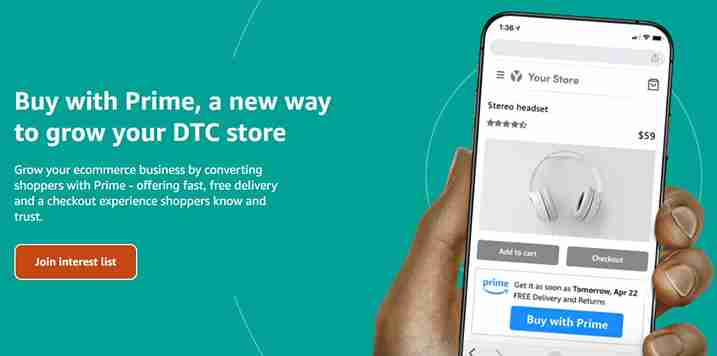
It stands to reason that this will become and remain Amazon’s fulfillment solution for direct-to-consumer online sellers, but that it likely won’t grow further. It would be remarkable if other marketplaces like Walmart or Target integrated with Buy with Prime (at least for the time being), and we’ll be very interested to see whether a critical mass of Shopify or BigCommerce sellers jump over to Amazon’s new service.
Shopify fulfillment network recently significantly drew back its ambitions, but in its place, Shopify has quickly pivoted to talks to buy a rival fulfillment service. If Shopify makes such a large investment in a fulfillment network of its own, it likely will want to shut Amazon out of its user base in favor of its own solution. As it stands, it’s an open question as to whether Shopify sellers will be able to use Buy with Prime.
We’ll keep a close eye as the situation develops, because multi-channel sellers know how painful it can be to have to manage multiple fulfillment solutions. Amazon is making a big play to extend FBA across more of the ecommerce landscape, but its competition isn’t standing still.
What Are the Drawbacks?
Buy with Prime promises to solve checkout and fulfillment for DTC merchants, but convenience will come at a price. Sellers trying to make it on their own or pursuing a multichannel ecommerce strategy enjoy significant benefits from their strategic distance from the big marketplaces, and implementing Buy with Prime will blur those lines and risk losing more than you gain.
Amazon Owns Your Customer
If Amazon gets their logo on your checkout process, and the customer converts because they feel more comfortable with Amazon, who really owns the customer? Or worse, will the customer even stay on your site?
Many DTC sellers have built brands and struck out on their own because they want to get away from Amazon and its questionable business practices. By owning their customer, they build long-term relationships that lead to repeat purchases and realize significant long-term customer value, the basis of sustainable profitability.
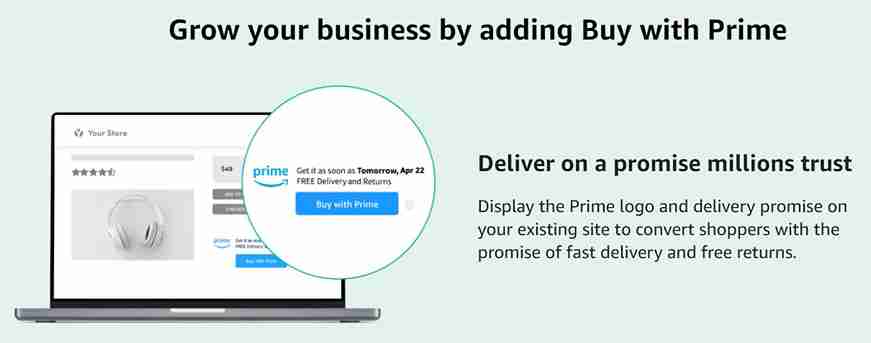
Source: buywithprime.amazon.com, 4/26/22
By bringing Amazon back into the mix, DTC sellers risk all of their hard work in developing a unique relationship with their customers. Fast and free shipping does boost conversion, so you may see a boost from new customers – but with Amazon’s logo doing the heavy lifting, you’re also giving customers the idea to head over to Amazon to price check and look at competitive offers.
Well over half of online product searches already start on Amazon. Do you really want to give shoppers the idea to pop over to the ecommerce giant after you’ve done all the hard work advertising to get them onto your site?
Pay Hefty Amazon Fees
In Q4 2021, Amazon made $30.3 billion from third-party seller services, which includes commissions, fulfillment, and shipping fees. While we don’t yet know the full fee structure of Buy with Prime, all indicators point to the company trying to turn this into the next Amazon Web Services. After all, in recent years Amazon has continued to lose money on its core retail business, while it makes up for it with huge profits from AWS and its advertising business.
AWS famously started as an internal service to run Amazon’s business before they productized it and started selling it to the world at large. Amazon FBA is now following the same exact path: it started as a way for Amazon to fulfill their own orders, then they extended it to third-party sellers, and now they’re expanding to DTC merchants. We anticipate that they’re targeting significant margins with this new business – perhaps they could even rival AWS’ 60%+ operating margin.
With this model, DTC merchants will feel the crunch in their own profitability. In exchange for increased conversion thanks to the Amazon Prime badge, they’ll realize lower margins. If the extra revenue doesn’t flow through to the bottom line, is the service worth it?
Competes with Your FBA Inventory Limits
Finally, if you’re a multichannel seller trying to win on Amazon and on a DTC site, you don’t get two separate inventory limits. All of your FBA and Buy with Prime inventory goes into one pool, and where an order is placed doesn’t make a difference.
While this is helpful in its simplicity, it’s a big potential challenge because Amazon is notorious for imposing too-strict FBA inventory limits and for long receiving delays. With all of your eggs in the FBA basket, you make yourself extremely vulnerable to a self-serving change in inventory limits or one of FBA’s routine weeks or months-long receiving delays.

The best fulfillment practice for Amazon-only sellers is to have an FBA alternative for the many times when FBA falls flat, and that will be doubly true for Buy with Prime users. If you’re selling on Amazon and on a DTC site, and a receiving delay knocks your best seller out of stock, that now doesn’t just kill your Amazon sales rank – it also kills your DTC store’s SEO and paid advertising efforts!
Though Amazon is positioning Buy with Prime as a holistic solution for DTC sellers, we assert that relying wholly on Amazon FBA would be a fatal mistake for your business.
The Buy with Amazon Prime Alternative: Cahoot
Cahoot has created a robust
If Buy with Prime’s promise of a simple multi-channel answer to fulfillment appeals to you, contact us in addition to sending in your application to Amazon.
Cahoot is the next generation of tech-enabled fulfillment networks. Unlike other networks that are collections of 3PLs, Cahoot’s innovative approach empowers merchants across the country to fulfill orders for one another. Our peer-to-peer network is a collective of highly vetted eCommerce retailers who offer up excess warehouse space and resources to provide high-quality order fulfillment to other merchants. Since they fulfill their own DTC orders, they know how important top-notch fulfillment is, and they put the same care and energy into your orders as they do for their own.
As a result, costs are typically lower than what you get with a traditional 3PL fulfillment company, yet service levels are higher. With a P2P network, multi-channel fulfillment with nationwide 1-day and 2-day delivery at economy shipping rates is the norm. Merchants can use the network solely for outsourced fulfillment – similar to FBA, or they can choose to fulfill orders for other merchants and offset some of their own outsourced fulfillment costs.
Offer 1-day and 2-day shipping at ground rates or less.
Recent Blog Posts

Packaging Design That Will Make Fulfillment Easy and Cut Costs
E-commerce Revolution with Strategic Packaging Solutions Like anyone in the e-commerce world, small business owners are always looking for ways to streamline their operations and
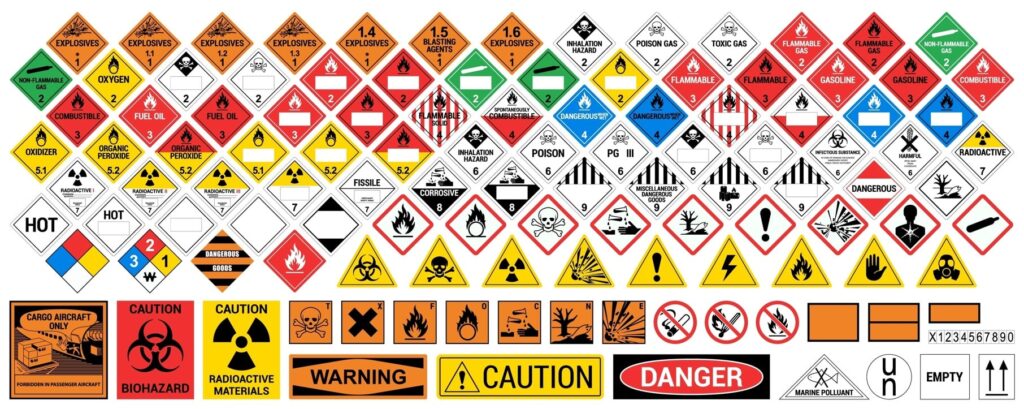
USPS Hazmat Shipping Guidelines – How to Ship Fast While Staying Compliant
Hazardous Materials What is a Hazardous Material? What Items Are HAZMAT? Classes of HAZMAT Items What Classes Can Ship on Various USPS Services? What Changes

Protect Your Amazon Listings from Search Suppression, Hijackers, and Stockouts
Amazon is a competitive platform. You need to have a quality product, excellent listing content, and plenty of reviews to catch the attention of busy

Up to 64% Lower Returns Processing Cost

Beauty Fulfillment & Cosmetics Services 3PL
The Health & Beauty industry is currently the fourth-largest retail category in the US and one of the fastest-growing consumer markets on the planet. Led by the Cosmetics and Skin Care categories, the industry has proven resilient, offering products that consumers just can’t get enough of.
Despite difficulties for brick-and-mortar retailers during the height of the Covid-19 pandemic, the industry is thriving online. According to a McKinsey report, the market for beauty products is expected to reach $580 billion in 2027, up from $430 billion in 2022, with that growth coming almost entirely from the online market. In fact, it’s growing more quickly than the overall ecommerce market, showing great promise as a place where sellers can earn big returns if they get things right.
That being said, getting things right in beauty products fulfillment is no easy task. From climate controls to hazardous goods to high damage rates, cosmetics (and other beauty products) present significant challenges.
In this article, we’ll provide an inside look into what you need to look for in a 3PL warehouse that will support your profitable growth as a Health & Beauty seller.
What is Cosmetics Fulfillment?
Cosmetics fulfillment refers to the process of storing, managing, and shipping beauty and cosmetics products to customers. This critical aspect of the beauty industry encompasses a range of services, including receiving and storing inventory, processing orders, picking and packing products, and shipping them to customers. Effective cosmetics fulfillment is essential for maintaining customer satisfaction and fostering brand loyalty. In an industry where product quality and timely delivery are paramount, a well-executed fulfillment process ensures that beauty and cosmetics products reach customers in perfect condition, enhancing their overall experience and trust in the brand.
Definition of Cosmetics Fulfillment Services
Cosmetics fulfillment services are specialized logistics solutions tailored to meet the unique needs of beauty and cosmetics products. These services typically include:
- Climate-Controlled Storage: Ensuring that products are stored in optimal conditions to maintain their quality and freshness.
- Secure Packaging: Using robust packaging methods to prevent damage and leakage during transit.
- Expedited Shipping: Offering fast shipping options to meet customer expectations for timely delivery.
- Inventory Management: Implementing precise tracking and timely restocking to ensure product availability.
- Order Fulfillment: Efficiently processing and shipping orders to customers.
These services are designed to handle the specific requirements of beauty and cosmetics products, ensuring that they arrive in perfect condition and delight customers.
Importance of Efficient Fulfillment in the Beauty Industry
Efficient fulfillment is crucial in the beauty industry, as it directly impacts customer satisfaction and brand loyalty. Beauty brands that can deliver high-quality products quickly and efficiently are more likely to build trust and loyalty with their customers. In contrast, delayed or damaged shipments can lead to negative reviews and lost sales. By prioritizing efficient fulfillment, beauty brands can enhance their reputation, increase customer satisfaction, and foster long-term brand loyalty.
Benefits of Outsourcing Cosmetics Fulfillment
Outsourcing cosmetics fulfillment can bring numerous benefits to beauty brands, including:
- Cost Savings: Outsourcing fulfillment can help reduce labor and overhead costs associated with managing inventory and shipping products.
- Increased Efficiency: Specialized fulfillment providers can process orders and ship products more quickly and accurately than in-house teams.
- Scalability: Outsourcing fulfillment allows beauty brands to scale their business more easily, without having to invest in additional infrastructure and personnel.
By leveraging the expertise of specialized fulfillment providers, beauty brands can focus on their core business activities, such as product development and marketing, while ensuring that their logistics operations are handled efficiently and cost-effectively.
Scalable Services to Support Business Growth
Scalable fulfillment services are designed to support business growth by providing flexible and adaptable solutions that can adjust to changing demands. These services typically include:
- Flexible Inventory Management: Accommodating fluctuating demand to ensure product availability.
- Adjustable Shipping Options: Meeting changing customer expectations with a variety of shipping choices.
- Real-Time Tracking and Reporting: Monitoring inventory levels and shipping status to maintain transparency and control.
- Customized Packaging and Labeling: Enhancing brand image and customer experience with tailored packaging solutions.
- Reverse Logistics Handling: Facilitating a seamless returns process to minimize waste and optimize the consumer experience.
By outsourcing cosmetics fulfillment to a specialized provider, beauty brands can focus on their core business and leave the logistics to the experts. This can help improve customer satisfaction, increase brand loyalty, and drive business growth.
What You Need From Your Cosmetics 3PL
While there are many similarities between fulfilling online orders for Health & Beauty products and general consumer packaged goods, beauty products have special needs that many 3PL warehouses aren’t equipped to handle.
In this section, we’ll break down the added requirements that 3PLs need to excel in providing excellent beauty product order fulfillment.
Climate Controls For Beauty Product Fulfillment
One of the most important considerations when choosing an order fulfillment company is the type of climate conditions that your products will require. Certain types of cosmetics become damaged when they are stored in conditions that are too hot, cold, wet, or dry. Lipstick, some blushes, mascaras, cream-based shadows, and more can all melt when exposed to warm temperatures. Once these products reach a certain temperature, their consistency begins to change and may render the products unusable altogether.
Unfortunately, many 3PLs maintain warehouses at warmer temperatures in order to save money on air conditioning – which makes them too warm for cosmetics. And product loss in the warehouse isn’t even your biggest concern (though it’s enough to destroy an ecommerce business on its own). Even worse, your outsourced warehouse team likely won’t realize that products are damaged before they ship them out. That leads to a mass of customers all receiving damaged products at once, and when they take to social media to complain it will create a lasting negative impression of your brand.
Therefore, it’s critical that any 3PL warehouse that you choose is equipped to handle, store, and ship cosmetics in optimal climate conditions so that your customers are able to receive the very best version of your product.
A good rule of thumb is to ask your 3PL company whether they guarantee their warehouses at or close to room temperature. Since most cosmetics are designed to be stored in cool, dry conditions in a user’s vanity, they’re usually safe at 72 degrees. That being said, know your product! If it requires more precise heat regulation, then you need to be even more careful up-front with your 3PL.
Cahoot has a wide variety of temperature-controlled warehouses, perfect for storing sensitive goods such as cosmetics.
Hazardous Goods Storage & Handling
Certain beauty products also have special requirements when it comes to safety and proper handling. In particular, many fragrances can create unsafe conditions and require specific treatment in storage. Many contain ethyl alcohol, which is flammable and puts them in hazard class 3.
Many 3PL warehouses avoid goods in hazard categories, as they either don’t want to take on extra risk or don’t have proper certifications for handling dangerous goods. Make sure that you’re up-front with the order fulfillment partners about the hazard classes that your goods fall into, or you risk wasting precious time and money sending them inventory that they legally can’t take.
We know that it can be hard to find a warehouse that not only accepts hazard class goods, but is built specifically for them. Cahoot ecommerce order fulfillment has intentionally curated warehouses with different specialties, including handling dangerous goods. We can go above and beyond to enable sellers with goods that have special handling needs.
Careful Packaging for Safe Shipping
One metric defines online seller profitability more than any other: customer lifetime value. With digital advertising becoming increasingly expensive, most sellers lose money on new customers. They’re only able to earn a positive bottom line through long-time repeat customers.
In Health & Beauty – perhaps more so than in any other industry – a fantastic post-purchase customer experience is critical to building repeat rates. Unfortunately, it’s more difficult to safely ship glass and fragile bottles than it is to ship other goods. So, the industry that most needs to minimize damage rates often has the hardest time doing so.
Unfortunately, many 3PLs that claim they can handle cosmetics and other beauty products treat them like any other good when it comes time to package them for shipping. This is insufficient: fragile items need extra time and care during packing.
Cahoot uses a combination of intelligent packing software and responsive customer service to get packaging right for the toughest goods to ship. We optimize for two things: we keep the package as small as possible to minimize shipping cost while also getting damage rates as close to 0% as possible. In this way, you save money on shipping while also ensuring that your customers are delighted when they open up their products every time.
Responsive Customer Service
Though responsive customer service is important for all online sellers, it’s especially important for a cosmetics 3PL given the above additional needs. As we’ve seen, Beauty & Health products have more unique shipping and handling needs, so you need to be able to get in touch with your 3PL’s customer service team quickly to feel confident that they know how to excel with your products.
Look for a 3PL company that offers you a real person to work with your account and multiple ways to get in touch with them. If it’s a small issue, live chat will do. Thornier challenges, on the other hand, should be governed by a detailed ticket system. And, of course, you need a phone line for critical issues.
Cahoot clients love our easy-to-reach and proactive customer service team. Our team is based in the USA, and they take the time to get to know your ecommerce business, so you don’t have to start at square one with a new person every time you submit a ticket. The close relationship we forge with our sellers is foundational to our ability to go above and beyond as a cosmetics 3PL.
Cahoot: The Best Cosmetics 3PL
Cahoot’s order fulfillment service network is built for the rigors of modern ecommerce. We’ll help you level the playing field with marketplaces and delight your customers with a stellar, Amazon-like delivery experience – no matter where you sell. We have pre-built integrations with major marketplaces, shopping carts, and ecommerce platforms to fuel your multi-channel growth.
Our innovative peer-to-peer model sets us apart by enabling us to offer low-cost, fast fulfillment by design. We recruit top-tier ecommerce merchants with their own warehouses to join our network as order fulfillment partners, and then our intelligent shipping software and control team keeps the whole system connected and running efficiently. Since we’re unlocking excess fulfillment capacity that was lying idle, we’re able to offer lower costs.
Critically for Health & Beauty sellers with the special handling needs we outlined above, we have a wide variety of merchants fulfilling for others as part of our network. Unlike other 3PLs that are building cookie-cutter warehouses designed to store easy-to-fulfill goods, we have specialists in temperature-controlled fulfillment, hazmat, and more. Our flexibility is part of what distinguishes us and makes us the best choice for sellers seeking a reliable cosmetics 3PL.
If you’d like to find out how Cahoot can help your ecommerce business, please get in touch with us. We can’t wait to show you how beauty products order fulfillment was meant to be.
Frequently Asked Questions
How much do cosmetics and beauty fulfillment services cost?
Costs for cosmetics fulfillment vary, and depend on a number of factors. Package size and the specific packaging and storage requirements of a given product will influence fulfillment costs, whether fulfillment is handled in-house or utilizing 3PL services. Pricing for 3PLs will also depend on factors like order volume and the capacity and policies of the 3PL in question. For detailed, custom pricing options, it is best to engage directly with 3PLs to determine what solutions and savings they can provide.
What kinds of regulations govern cosmetics products in the United States?
While cosmetics products do not require approval from the Food and Drug Administration (FDA), they are regulated by that body. Ingredients, labeling, effective dates, and product warning labels are all regulated by the FDA. For information about regulations that may impact your products, consult the FDA website.
What factors should I consider when picking a 3PL partner for my cosmetics fulfillment?
Finding the best fulfillment partner for you requires balancing general and cosmetic-specific needs for your product. Pricing, specialized storage and packaging solutions, order volume, and available locations for fulfillment centers are all important considerations. To find out if Cahoot can help you optimize your fulfillment strategy, speak to a representative about our custom fulfillment solutions.

Up to 64% Lower Returns Processing Cost

The North Face Closes 113 Stores on Earth Day
In this article
The North Face closed it’s global headquarters and 113 stores in the U.S. and Canada on Earth Day, April 22. The action is part of a campaign to make Earth Day an officially recognized holiday.
The North Face closed it’s global headquarters and 113 stores in the U.S. and Canada on Earth Day, April 22. The action is part of a campaign to make Earth Day an officially recognized holiday.
As part of the campaign, the North Face also launched “Explore Mode” in major cities in the week leading up to Earth Day. Throughout the week, The North Face partnered with musicians, artists and culinary influencers to host a series of experiences that encourage people to disconnect digitally and engage with their surroundings.
Per Total Retail, The North Face joins a growing list of outdoor brands, including REI and Patagonia, that are becoming increasingly vocal about social causes such as environmental protection. For these companies, closing stores — costing short-term profits — has become a powerful tool to make a statement about serious global issues.
Offer 1-day and 2-day shipping at ground rates or less.
Related Blog Posts

Packaging Design That Will Make Fulfillment Easy and Cut Costs
E-commerce Revolution with Strategic Packaging Solutions Like anyone in the e-commerce world, small business owners are always looking for ways to streamline their operations and

USPS Hazmat Shipping Guidelines – How to Ship Fast While Staying Compliant
Hazardous Materials What is a Hazardous Material? What Items Are HAZMAT? Classes of HAZMAT Items What Classes Can Ship on Various USPS Services? What Changes

Protect Your Amazon Listings from Search Suppression, Hijackers, and Stockouts
Amazon is a competitive platform. You need to have a quality product, excellent listing content, and plenty of reviews to catch the attention of busy
Top 3 Alternatives to Amazon FBA
What’s not to love about Amazon FBA? List your product on Amazon, send them your inventory, and reap the rewards of the Amazon Prime badge and low shipping costs (though FBA fees are rising again).
It’s a great deal for those that can get it, but sellers need to be aware of rising FBA fees. It’s also limited in two key ways: 1) it’s an inflexible point solution and 2) Amazon simply doesn’t have enough space. And no wonder; Amazon adds about 3,700 new 3rd-party sellers a day, so FBA can’t keep up with demand. Amazon’s response is to limit FBA to work well only for the SKUs that maximize their profit (not the sellers’) and to impose restrictive inventory limits.
Sellers that want to grow both on and outside of Amazon will need an alternative to FBA to keep their growth engine humming. Read on to learn more about what to watch out for with Amazon FBA and your options for other ecommerce order fulfillment solutions.
Why You Can’t Rely on Just Amazon FBA
Amazon FBA will do a great job of fulfilling a portion of the volume of your small SKUs sold on Amazon, but it falls short otherwise.
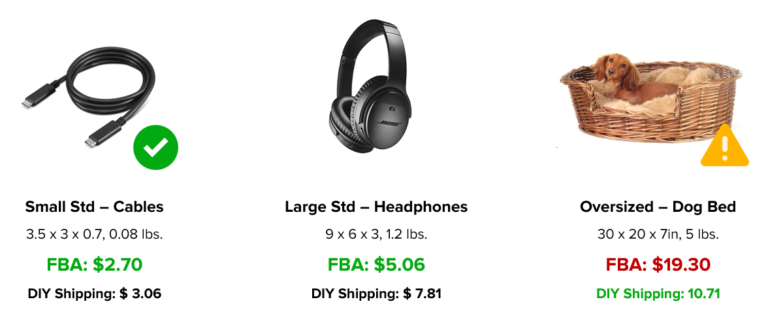
image courtesy: Amazon FBA Revenue Calculator, DIY Shipping estimated using discounted shipping rates for Zone 4 Residential shipping
The above example is typical of Amazon FBA fees: their price for small and standard items beats other options, but even slightly oversized products like the example 5lb dog bed ends up costing almost double a merchant’s price shipping it on their own. The reason is simple – they’ve optimized their network for small, easy, and efficient products.
As a result, Amazon sellers that use FBA for their shipping are boxed in when it comes to growth, and they all compete with one another to sell the same small, cheaper items. If FBA is your only good option, you can’t profitably expand your product line to larger, less competitive options because fulfillment fees will eat up your margins, making a 3PL a necessary consideration. If you raise price to compensate, then you’ll lose to the savvy merchants who have diversified their fulfillment strategies and can get the product to the customer at half the price.
The challenges don’t end there for Amazon FBA. ecommerce’s year over year unprecedented boom in growth has delivered massive returns to Amazon and Amazon sellers, but it’s also left FBA bursting at the seams. To compensate, Amazon switched from ASIN-level inventory limits to product type inventory limits and overnight sellers saw their inventory limits cut by up to 65%.

image courtesy: US Census Bureau, Marketplace Pulse, Cahoot interviews with merchants
On top of the lower limits, Amazon FBA is also experiencing receiving delays of up to three weeks. This creates a huge window of time in which a seller can run out of stock on a key item: even if the seller sent a timely replenishment, receiving delays can create the issue. In the peak selling season, this is an even bigger problem. Demand surges can easily run an item out of stock in a matter of days or even hours, triggering a death spiral in which a product loses its search rank, which lowers impressions and conversions, which in turn lowers inventory limit again.
It’s clear that Amazon FBA is no longer an all-in-one solution for Amazon sellers. It’s a point solution that can be an important part of a fulfillment strategy but needs to be augmented to cover for its flaws.
Evaluating Amazon FBA Order Fulfillment Alternatives
Amazon FBA’s structure tells a valuable, if simple lesson: the most cost-effective way to offer nationwide 1-day and 2-day delivery is to create a distributed fulfillment network that always has inventory near the end customer. This setup enables 1- and 2-day delivery with economic ground shipping; the best of both worlds.
To enjoy the same benefits of Amazon FBA’s network without the same drawbacks, sellers’ options generally fall into three main categories:
1. Open Multiple Fulfillment Centers Yourself
Merchants can take it upon themselves to open multiple US fulfillment centers, but today’s environment is extremely challenging. Warehouse space has never been more limited or expensive, and there are an incredible 400,000 open job positions for frontline ecommerce order fulfillment workers. On top of that, opening one’s own centers ties up significant capital and is risky – if a seller picks a sub-optimal location, or a location becomes sub-optimal as consumer preferences change, they’re stuck footing the bill.
2. Third-Party Logistics Companies (3PLs)
Another option is to outsource fulfillment to multiple 3PLs. These are generally smaller, independent companies not connected to any specific marketplace but 3PLs can offer comprehensive supply chain solutions. You will have to contract numerous 3PLs to get nationwide 1-day and 2-day coverage. Order routing across disparate 3PLs is complex and labor-intensive, so you may need to invest in expensive fulfillment software to make it more efficient. Fulfillment costs will vary between 3PLs, and not all of them can meet the strict SLAs needed to win the Buy Box on every marketplace, so be sure to use something like a 3PL request for proposal (RFP) template to get an apples to apples comparison.
3. Tech-enabled Fulfillment Network
A modern and affordable alternative to working with 3PLs is to use an ecommerce order fulfillment network. A tech-enabled fulfillment network upgrades the traditional 3PL model to cover the whole country. Merchants will send their inventory to multiple nodes in the network, and then the network’s software will automatically send parcels from the optimal location to the end customer, saving on shipping costs. In essence, these networks are “FBA-lite” – they have the same core functionality as FBA.
Definition of a Fulfillment Company
A fulfillment company is a third-party logistics (3PL) provider that specializes in managing the entire order fulfillment process for ecommerce businesses. They handle tasks such as inventory management, warehousing, order processing, packaging, and shipping. By outsourcing these logistics services, commerce businesses can focus on their core operations, such as marketing and product development, while the fulfillment company ensures that orders are processed efficiently and accurately.
Benefits of a Fulfillment Company in Ecommerce
In the ecommerce landscape, a fulfillment company plays a crucial role in providing efficient and cost-effective order fulfillment services to sellers. Acting as an extension of the ecommerce business, these companies manage logistics and supply chain operations, ensuring that customers receive their orders quickly and accurately. This allows ecommerce businesses to scale their operations without the burden of managing warehousing, packing, and shipping, ultimately enhancing customer satisfaction and operational efficiency.
Cahoot: Alternative to Amazon FBA
Cahoot is a robust FBA alternative, and it works just as well as a backup or enhancement of FBA as it does as a full replacement. And Cahoot’s much more than that; it’s the most flexible solution in the marketplace and can ship orders for every ecommerce sales channel.
Cahoot is the next generation of tech-enabled fulfillment networks. Unlike other networks that are collections of 3PLs, Cahoot’s innovative approach unlocks and empowers merchants across the country to fulfill orders for one another. Our peer-to-peer network is a collective of highly vetted ecommerce retailers who offer up excess warehouse space and resources to provide high-quality order fulfillment to other merchants.
As a result, costs are lower than what you get with a traditional 3PL fulfillment company, and service levels are higher. With a P2P network, multi-channel fulfillment with nationwide 1-day and 2-day delivery is the norm. Merchants can use the network solely for outsourced fulfillment, similar to FBA, or they can choose to fulfill orders for other merchants and offset some of their own outsourced fulfillment costs.
Frequently Asked Questions
What are the costs for FBA?
The main costs associated with Amazon FBA are fulfillment fees, storage fees (including aged inventory surcharges), and any extra charges for removal or disposal of inventory, inventory prep such as barcoding, placement fees, inbound defect fees, and possibly others. Make sure to factor these into your pricing strategy!
What is a 3PL?
A third-party logistics company (3PL) is a service provider that either arranges or handles a variety of supply chain functions for a business. These functions can include brokering, shipping, storing, or packing a company’s freight, as well as supply chain strategy and access to technology.
Is 3PL pricing more transparent?
3PL providers ensure transparent pricing by offering customizable logistics solutions and engaging in contract negotiations, which allows for clear and flexible pricing options. This way, you know exactly what you’re paying for and can budget accordingly.

Up to 64% Lower Returns Processing Cost

eBay Fulfillment: How Fast Shipping Helps You Grow
In this article
 14 minutes
14 minutes
- What is eBay Fulfillment?
- Why is Fast and Free Shipping Important for eBay Fulfillment?
- Overview of Options for eBay Fulfillment Services
- Choosing the Right Fulfillment Service
- International Shipping and eBay Fulfillment
- Inventory Management and eBay Fulfillment
- Why Cahoot Is the Best Option for eBay Fulfillment
- Frequently Asked Questions
Fulfillment is often an afterthought for sellers – after all, “sellers” want to sell. Your eBay fulfillment strategy, though, has a much bigger impact on sales than you might realize. Utilizing an eBay Fulfillment Center, a comprehensive third-party logistics provider, can streamline order processing, manage inventory, and ensure timely deliveries, significantly enhancing customer satisfaction and business performance. If you’re not offering fast and free shipping, you’re severely limiting your growth. And if you don’t have the right provider, you’ll pay an arm and a leg for that shipping, eating up precious profits.
In this article, we’ll highlight the importance of fast and free shipping on eBay (if you’re not already convinced) and give a primer on your different options for eBay fulfillment. By the end, you’ll feel much more confident in your ability to turn operations into a growth driver for your business.
What is eBay Fulfillment?
eBay Fulfillment is a comprehensive service designed to help sellers outsource their order fulfillment processes to a trusted third-party logistics provider. This service allows sellers to focus on growing their business while leaving the logistics and shipping to a reliable partner. eBay Fulfillment centers offer a range of services, including storage, packing, and shipping, ensuring that orders are fulfilled quickly and efficiently. By leveraging an eBay Fulfillment service, sellers can significantly improve customer satisfaction, reduce shipping costs, and increase their overall profitability. With streamlined fulfillment processes, sellers can ensure that their customers receive their orders on time, every time.
Why is Fast and Free Shipping Important for eBay Fulfillment?
Online Shoppers Want Fast and Free Shipping
Thanks to Amazon Prime, online shoppers now expect their orders to arrive quickly and for free. In fact, a McKinsey study found that over 90% of customers view 2- to 3-day delivery as the baseline for eCommerce. eBay sellers used to be relatively immune from these rising customer expectations, but those days are over.
Ignore fast and free shipping at your own risk – US consumers expect free shipping even on orders under $50, and 48% of all cart abandonment is caused by unexpected shipping costs.
eBay now automatically applies “Free delivery in 2/3/4 days” tags to qualifying products – like the Fast ‘N Free badge that preceded it, this marker gives shoppers exactly what they want. eBay sellers with the tags stand out in search results and convert better, driving higher revenue by leveraging efficient shipping services that enhance order processing and customer satisfaction.
Improve your Seller Rating
Fast and free shipping is a key rating factor that can help to boost your eBay seller rating. Shipping time and shipping fees both have their own line item in “Detailed seller ratings” on eBay, and of course, a high seller rating has a huge impact on eBay sales. Having a reliable fulfillment partner is crucial for effectively managing shipping and logistics, ensuring timely delivery and high service standards.
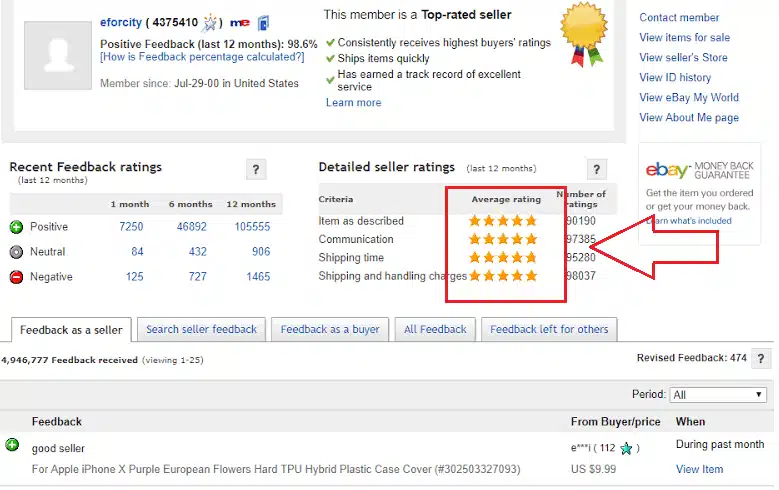
Furthermore, qualification for the lucrative Top Rated Seller Program depends in part on fast shipping – so if you want to be in the top echelon of eBay sellers, you’re going to need fast and free shipping.
Increase Impressions
Free shipping helps you win more impressions and clicks on the eBay marketplace by providing actionable tips for sellers.
eBay gives users the ability to filter by “Free shipping”, meaning that if you’re charging for shipping, some buyers are completely excluding you from consideration. Even if they don’t filter out “Free shipping”, many others will sort their search results by “Price + Shipping” – that’s right; eBay’s price sort includes the cost of shipping, so if you undercut your competitor on product price, but have a shipping fee, you’ll still lose out.
On top of that, eBay prominently writes “Free shipping” for products that don’t charge for shipping, making them stand out against others that come with hefty shipping fees.
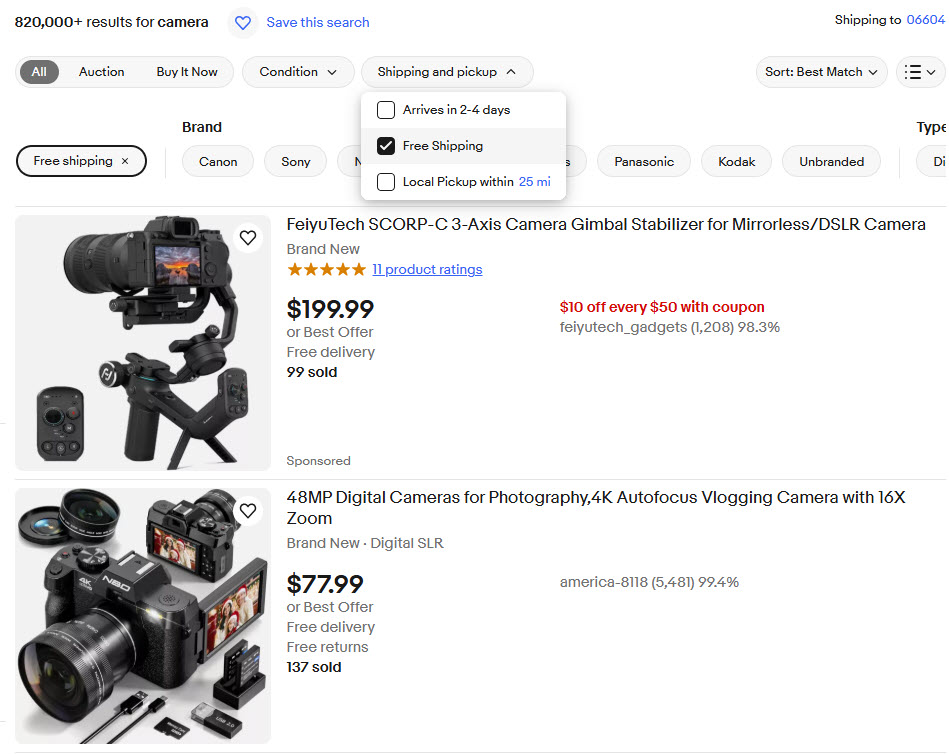
The combination of filters, sorts, and “Free shipping” copy all combine to make it an excellent way to boost your search page results on eBay.
Lower Cart Abandonment and Boost Conversion Rate
The impact of fast and free shipping isn’t limited to the product search experience. In truth, it makes the biggest difference once customers are on the product page itself. Consider that unexpected costs at checkout, including shipping, are the number one cause of abandoned carts, causing 48% of all shoppers to abandon.
Consumer preferences are clear – they convert more often and abandon their shopping cart less frequently when they’re offered free shipping. Effectively managing and fulfilling orders enhances efficiency in eCommerce, ensuring that customers receive their products quickly and reliably.
Improve Customer Lifetime Value
Shoppers will often go the extra mile for free shipping, which opens up creative strategies to boost your repeat purchase and retention rates.
Invesp found that 58% of customers will add items to a cart to qualify for free shipping, 47% will search for an online promo code, and 31% will join a loyalty program.
If you don’t want to offer free shipping right off the bat, then you can introduce an order value minimum or offer free shipping to people that sign up for a loyalty program. Both of these actions will improve your customer lifetime value – bigger carts are self-explanatory, and loyalty program members repeat shop again and again. An effective fulfillment strategy is essential for operating a profitable business, ensuring customer satisfaction and efficiency.
Overview of Options for eBay Fulfillment Services
So, you’re convinced – you want to offer fast and free shipping on eBay. But how do you do it without breaking the bank? Here are the pros and cons for the different ways you can fulfill orders.
eBay’s managed delivery service is an efficient logistics solution designed for sellers with high-volume inventory, aiming to provide faster delivery while reducing costs and complexities associated with order fulfillment.
Self fulfillment
eBay allows you to ship your items yourself. With in-house fulfillment, you own the process, the profits, and the risks.
The benefit, of course, is that you have full control over the fulfillment process. You can choose where and how your products are stored, ensuring that they’re in the best condition possible when they get to customers. If there are errors in fulfillment, you have the power to immediately fix issues.
The main drawbacks of self-fulfillment are that it’s extremely time-consuming and it isn’t cost-effective in the long run. If you’re fulfilling your own orders, your success comes with a price – more and more of your time will be consumed by managing operations.
If you’d like to learn more about how to go it alone, here’s a more in-depth look at how to offer free shipping and still make a profit.
Local pickup
This eBay fulfillment option is ideal if you sell large or bulky items. It allows you to arrange pickup with the buyer so you can avoid shipping costs and price your items even cheaper.
You’ll need to provide a ZIP code, at least one electronic payment method (in addition to Pay on pickup), customer service, and generate your Proof of pickup to protect yourself in case of “item not received” disputes.
Of course, local pickup limits your market to your locality or contiguous areas. Sellers with serious growth ambitions will need to combine local pickup with another fulfillment option.
Drop shipping
eBay sellers can also use drop shipping to fulfill orders directly from a wholesale supplier. Under this arrangement, your supplier will deliver orders directly to your customers.
Your supplier handles the entire fulfillment process on your behalf using the buyer information available to them. It’s simple and will dramatically reduce your overhead compared to self fulfillment. However, your customers will still hold you responsible for timely delivery and overall customer satisfaction. If the dropshipper makes a mistake, you’re the one that pays the price.
For quality, you don’t get to inspect the product before it gets to the customer. You have to rely entirely on the dropshipper, and when things go wrong, you’re left on the outside looking in.
Just as importantly, your customers won’t be delighted by fulfillment provided by dropshippers. Since they’re almost always shipping from one location, the delivery won’t be fast for customers across the country – and as we explained above, that’s a critical piece of modern eCommerce. Since they’re often shipping long distances, the shipping is more expensive than it needs to be as well.
If you choose this option, don’t list an item on eBay and then purchase it from another retailer or marketplace that ships directly to your customer. If you do, you’ll face sanctions ranging from listing cancellations to forfeiture of fees paid or payable to your account.
3PL fulfillment
If you’re looking for a fulfillment service that offers the benefits of self-fulfillment without all the hassle, then using a third-party provider is your best bet.
The best 3PLs will give you access to a nationwide network of warehouses and carriers, so shipping products will take less time than if you were going it alone – in most cases within one or two days. Furthermore, if a 3PL places your inventory across the country strategically, you’ll always pay ground rates for shipping, so fast delivery will come at low prices.
Like dropshipping, trusting a third party means giving up some control over your product before it gets to the customer. This challenge can become apparent with 3PLs that aren’t built for eCommerce, as products get damaged in their rush to fulfill orders. Modern 3PL networks that specialize in eCommerce, though, have very low defect rates and may even improve on your own delivery record. Multi channel fulfillment is also crucial, as it allows integration with multiple sales channels for efficient order management.
This can introduce complexity and increase your handling fees. A 3PL Request for Proposal can help you to weigh your options.
Choosing the Right Fulfillment Service
Choosing the right fulfillment service is crucial for eBay sellers who want to ensure that their orders are fulfilled efficiently and effectively. When selecting a fulfillment service, sellers should consider several key factors. First, evaluate the service’s reputation and reliability to ensure that it can consistently meet your fulfillment needs. Cost is another important consideration; look for a service that offers competitive pricing without compromising on quality. Additionally, seek out a fulfillment service that provides real-time inventory management, automated order tracking, and flexible shipping options. It’s also essential to consider the service’s ability to handle international shipping and its integration with the eBay platform. By choosing the right fulfillment service, sellers can enhance customer satisfaction, reduce shipping costs, and boost their overall profitability.
International Shipping and eBay Fulfillment
International shipping is a critical aspect of eBay fulfillment, as many sellers cater to customers around the globe. When choosing a fulfillment service, it’s important to find a provider that offers reliable and cost-effective international shipping options. A good fulfillment service should be capable of handling customs clearance, duties, and taxes, while also providing tracking and insurance options for international shipments. Additionally, the service should offer real-time updates on the status of international shipments, allowing sellers to keep their customers informed every step of the way. By using a fulfillment service that excels in international shipping, sellers can expand their customer base and increase their sales, all while ensuring a smooth and reliable delivery experience.
Inventory Management and eBay Fulfillment
Effective inventory management is a cornerstone of successful eBay fulfillment, ensuring that sellers have the right products in stock to meet customer demand. A top-notch fulfillment service should offer real-time inventory management, allowing sellers to track their stock levels accurately and avoid issues like overselling or underselling. The service should also provide automated alerts when stock levels are low, enabling sellers to replenish their inventory promptly. Additionally, a good fulfillment service will handle inventory storage, receiving, and picking, freeing up sellers to focus on growing their business. By utilizing a fulfillment service with robust inventory management capabilities, sellers can enhance customer satisfaction and reduce shipping costs, ultimately driving their business’s success.
Why Cahoot Is the Best Option for eBay Fulfillment
Cahoot’s eBay fulfillment service will power affordable fast and free shipping for your listings, increasing revenue and margin. Our best-in-class fulfillment network partners with eBay sellers to make fulfillment a breeze – we can get you up-and-running with an improved delivery experience in as little time as it takes you to send us inventory.
With Cahoot, your eBay store can integrate various fulfillment services directly, automating order processing, inventory management, and shipping logistics. Your listings will automatically get eBay 2-day, 3-day, and 4-day fast shipping tags (formerly Fast N’ Free Shipping), boosting conversion.

If you’d like to find out how Cahoot can help your business, please get in touch with us. We can’t wait to show you how fulfillment can power your growth on eBay.
Frequently Asked Questions
What is eBay fulfillment?
eBay Fulfillment refers to eBay’s logistics solutions that help sellers store, pack, and ship their products efficiently. Unlike Amazon’s Fulfillment by Amazon (FBA), eBay does not directly handle fulfillment but partners with third-party logistics providers to offer these services. One of the main programs currently available is eBay Fulfillment by Orange Connex, which provides warehousing, order fulfillment, and fast shipping options for eBay sellers.
Is selling on eBay worth it?
Selling on eBay can be worth it, but it depends on your business model, product type, and goals. eBay offers access to a massive global customer base, and (unlike Amazon) allows for both fixed-price listings and auction-style sales, which can help sellers move inventory quickly or get the best price for rare items. Fees are generally lower than Amazon’s, and there are fewer restrictions on the types of products you can sell.
However, there are challenges. eBay is highly competitive, with many sellers offering similar products, often at low margins. The platform has strict policies on seller performance, and negative feedback can impact sales. If you’re selling high-demand products and can manage fulfillment efficiently, eBay can be a profitable marketplace. However, if you’re looking for a fully automated fulfillment solution like Amazon FBA, eBay may require more hands-on effort.
How much does eBay make on each sale? (eBay fees)
Selling on eBay involves several fees that sellers should be aware of to manage their costs effectively. The primary fees include insertion fees and final value fees.
Insertion Fees: eBay allows sellers to list up to 250 items per month without incurring insertion fees. Beyond this allowance, each additional listing typically costs $0.35. However, certain categories may have different fee structures or exceptions.
Final Value Fees: When an item sells, eBay charges a final value fee, which is a percentage of the total sale amount, including shipping and handling. For most categories, this fee is 13.25% of the sale price up to $7,500 per item, and 2.35% on the portion of the sale over $7,500.
Can I sell on both Amazon and eBay?
Yes, you can sell on both Amazon and eBay at the same time. Many e-commerce sellers choose to list their products on both platforms to expand their reach and maximize sales. However, managing inventory, pricing, and fulfillment across two marketplaces requires strategic planning.
What is the best way to fulfill eBay orders?
The best way to fulfill eBay orders depends on your business size, volume, and resources. Options include self-fulfillment, local pickup, drop shipping, and using a third-party logistics (3PL) provider. Each method has its pros and cons, and the right choice will depend on your specific needs and goals.
How can I improve my eBay seller rating?
Improving your eBay seller rating involves several key factors, including providing fast and free shipping, maintaining accurate listings, offering excellent customer service, and promptly addressing any issues or disputes. Utilizing a reliable fulfillment service can help ensure timely deliveries and enhance customer satisfaction, which in turn can boost your seller rating.
What are the benefits of using a 3PL for eBay fulfillment?
Using a third-party logistics (3PL) provider for eBay fulfillment offers several benefits, including access to a nationwide network of warehouses and carriers, reduced shipping times and costs, and the ability to scale your operations without the need for significant investment in infrastructure. A 3PL can also handle inventory management, order processing, and shipping logistics, allowing you to focus on growing your business.

Up to 64% Lower Returns Processing Cost


